Planning the perfect Spanish bungalow exterior means blending timeless Mediterranean materials with relaxed curb appeal typical of sun-soaked homes from California to Andalucía. From red clay barrel tiles and crisp white stucco to wrought-iron lanterns and colorful Talavera details, the style layers warmth, texture, and history in every corner. Below are 20 Spanish bungalow exterior ideas—each clearly explained in around 100 words—to help you translate that romance into practical design moves for your own home.
1. Spanish Bungalow Exterior Red Clay Tile Roof
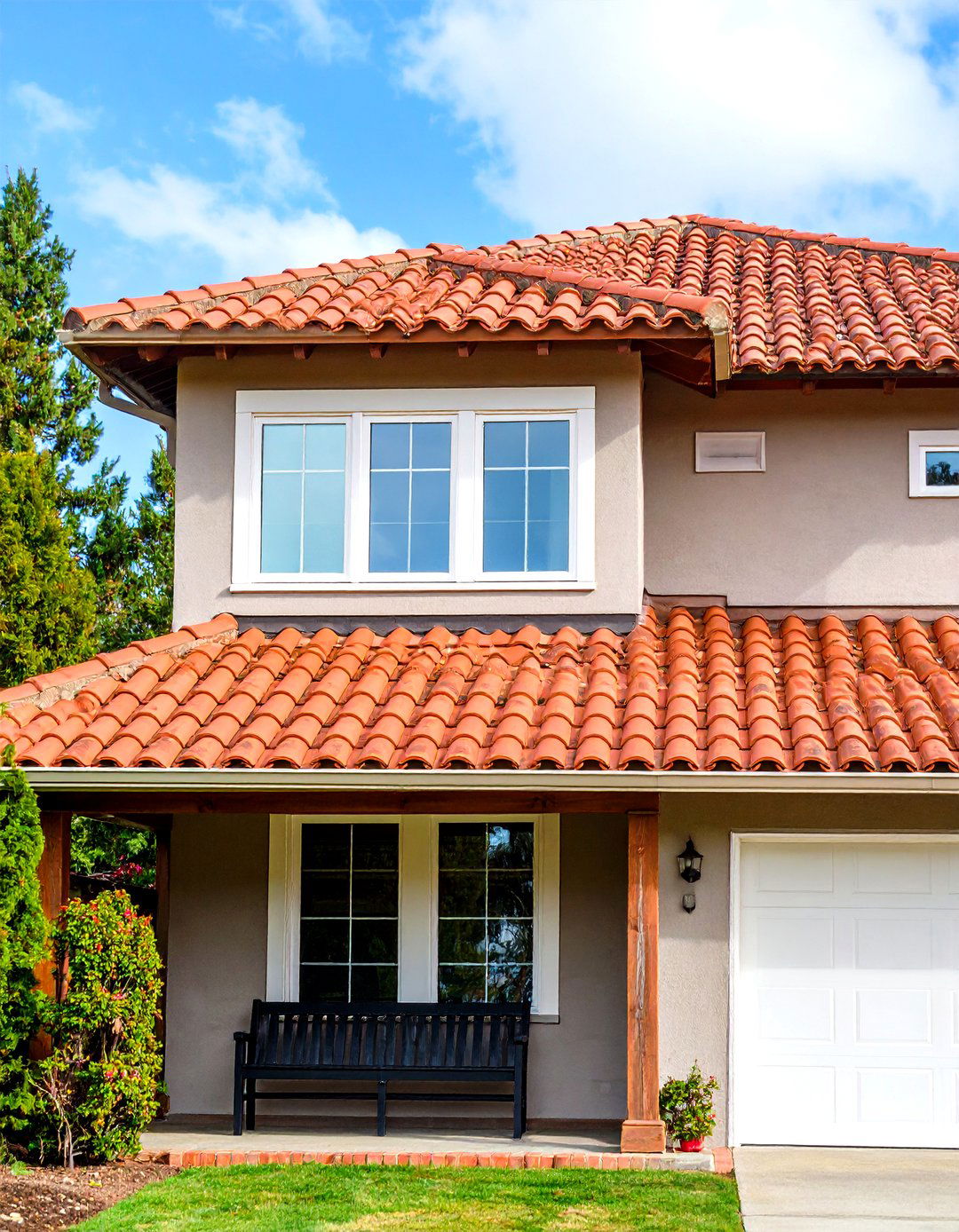
Unlike lightweight asphalt shingles, traditional red clay barrel tiles instantly telegraph Spanish pedigree while delivering decades of weather protection and passive cooling for a compact bungalow roofline. The curved profile channels rainwater into shallow troughs, and the kiln-fired material’s thermal mass helps moderate interior temperatures in scorch-prone regions. Because the tiles weigh far more than composite roofing, reinforce rafters or add plywood sheathing before laying battens and mortar. No matter the climate, ask your roofer to mix randomly dark-flashed pieces with standard terra-cotta; this subtle mottling is commonly seen on 1920s California Revival cottages and prevents a flat, monotone finish.
2. Spanish Bungalow Exterior Smooth White Stucco Walls
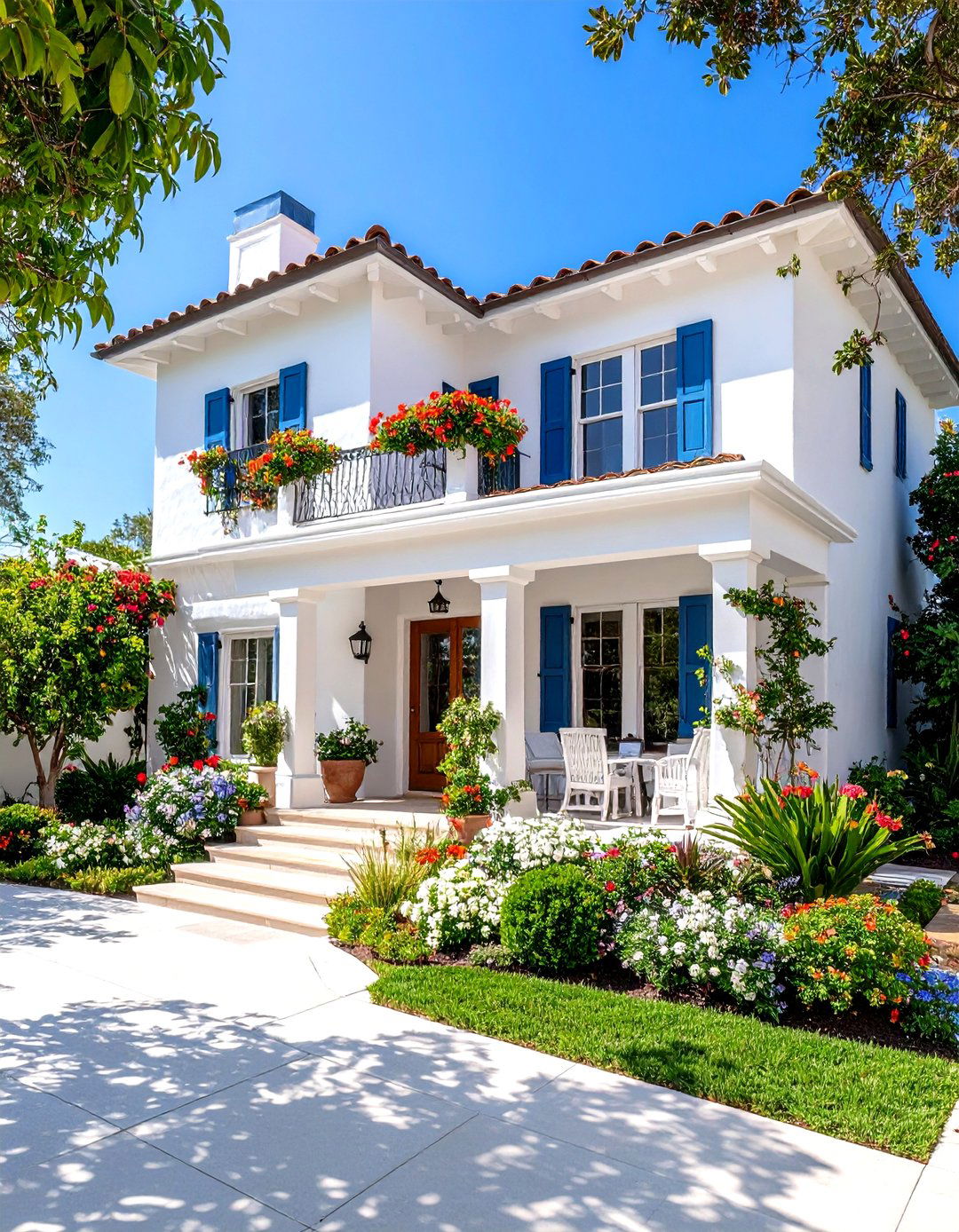
As the sun beats down, thick lime-washed stucco walls reflect glare and absorb daytime heat, releasing it slowly after dusk to keep interiors comfortable without mechanical cooling. A crisp white finish also heightens contrast with tiled roofs, carved wood, and verdant landscaping, creating the iconic postcard look of coastal Spanish Colonial Revival houses. Before re-plastering, repair cracks with a polymer-modified base coat, then apply two breathable coats of lime or cement plaster followed by a mineral paint rather than impermeable latex. To add texture, ask the mason for a hand-troweled Santa Barbara smooth coat; the slightly mottled surface feels artisanal yet resists the deep grooves that trap desert dust.
3. Spanish Bungalow Exterior Arched Tile-Wrapped Entry

Nothing whispers bienvenida quite like a low, rounded arch trimmed in hand-painted Talavera or Saltillo accent tiles framing the bungalow’s front walkway. The curved opening softens boxy massing and instantly identifies the façade as Spanish rather than Craftsman or Mid-Century. Use three-inch bullnose tiles at the jamb to protect stucco edges from chipping, then run a contrasting rowlock of cobalt or ochre pieces along the riser for depth. Finish the reveal with a wrought-iron gate or lantern to layer texture and provide security without blocking airflow on balmy evenings. Architects often repeat the arch motif at windows or loggia openings to reinforce rhythm across the elevation.
4. Spanish Bungalow Exterior Wrought-Iron Window Grilles
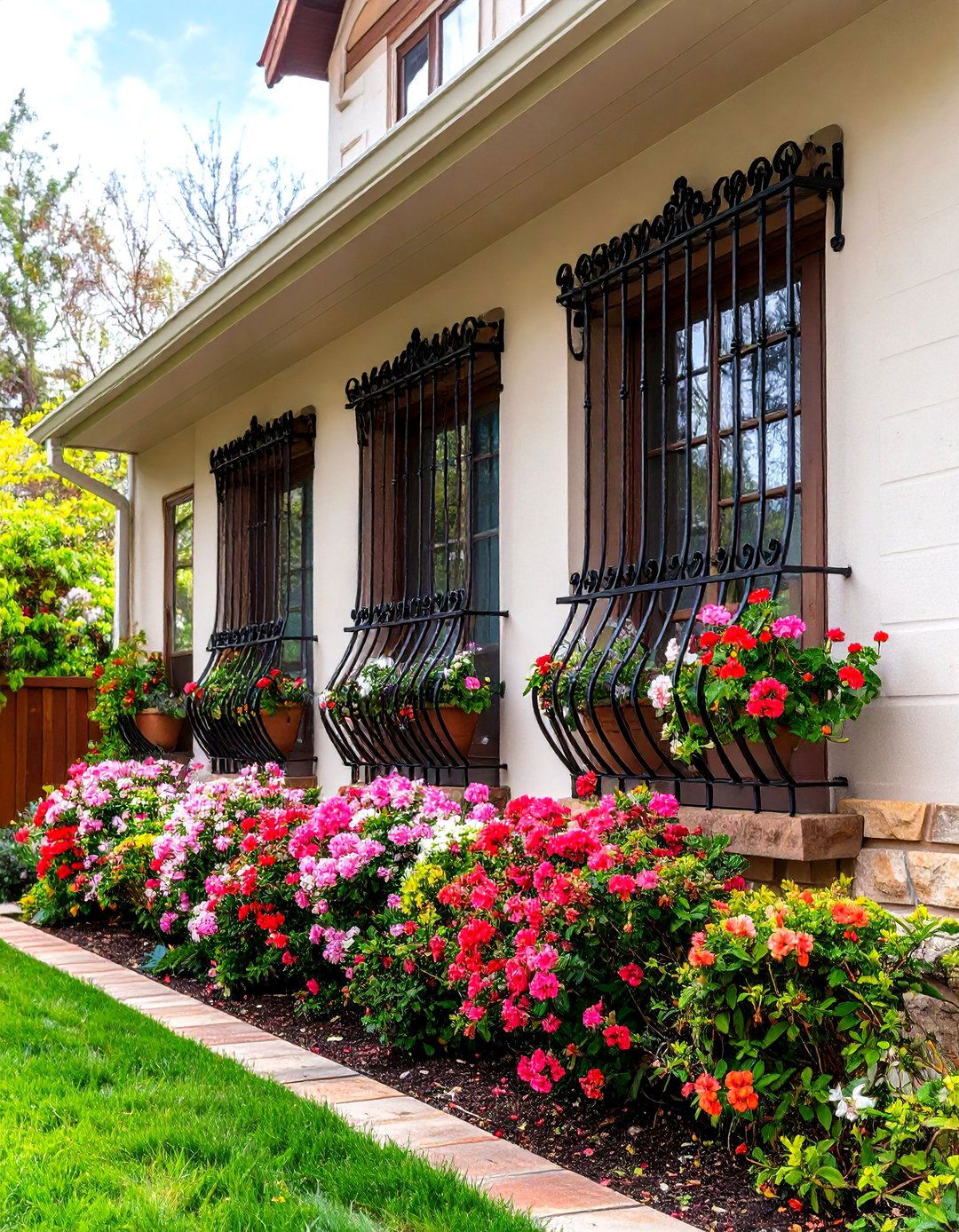
Hand-forged wrought-iron grilles turn ordinary window openings into jewelry, providing security, shade, and shimmering shadow play. Classic scrolls, quatrefoils, and spears echo patterns found on Andalusian balconies and look authentic when finished in a living oil-rubbed patina rather than glossy powder coat. Mount the iron four inches off the glass on masonry stand-offs to allow washing and to create depth, then flank with wood shutters if privacy demands. Even a single grille over a bathroom window can balance a front elevation dominated by garage or porch massing without adding significant cost. Because the metal absorbs heat, pair grilles with interior bamboo shades to cut afternoon solar gain while still showcasing the artistry from the street.
5. Spanish Bungalow Exterior Carved Wooden Front Door
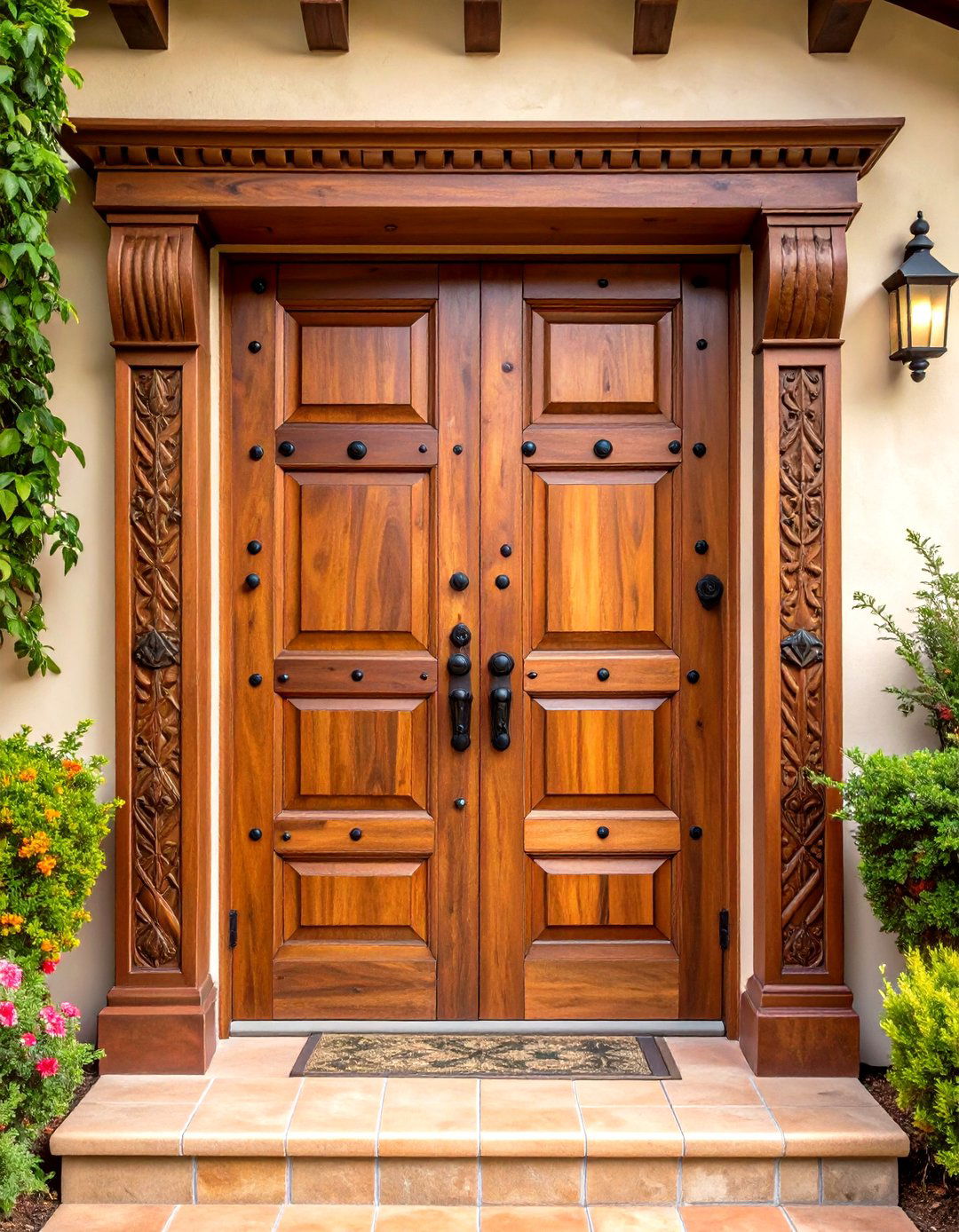
A weighty, plank-style front door with hand-carved panels anchors the entry and signals the craftsmanship prized in Spanish Colonial Revival homes. Stain the alder or cedar a deep walnut shade and stud it with clavos—decorative iron nails—so the textured surface complements surrounding stucco. Set the door within a slightly recessed jamb to cast shadow lines, then top it with a modest radius transom or speakeasy grille for ventilation and intrigue. If budget permits, upgrade to a reclaimed antique sourced from architectural salvage; the time-worn patina and oversized strap hinges immediately raise historic authenticity. Seal the assembly with marine-grade spar varnish; the high UV resistance prevents the rich tone from bleaching under intense western sun.
6. Spanish Bungalow Exterior Talavera Stair Risers
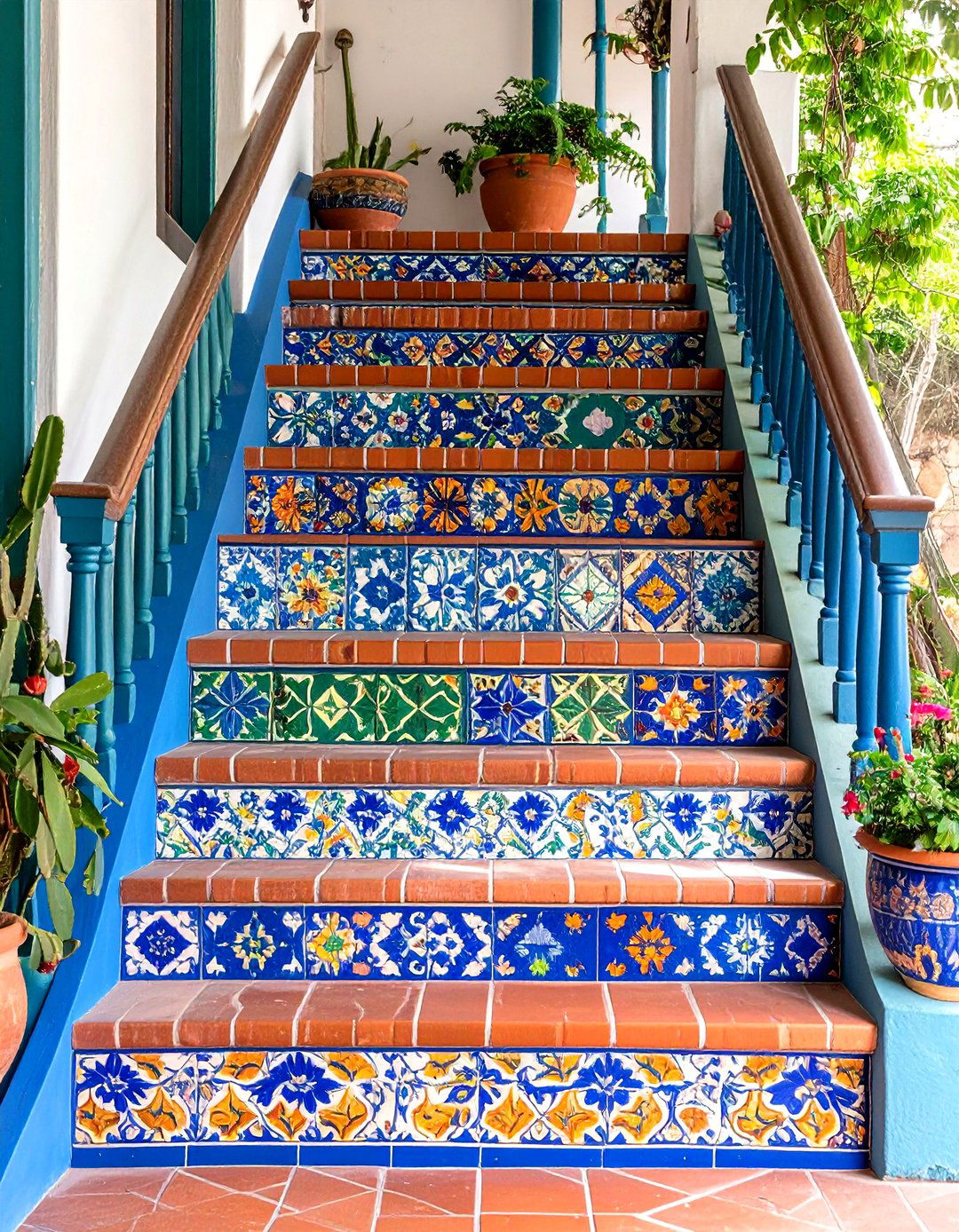
Colorful Talavera tiles on porch or entry stair risers inject fiesta-level joy without compromising traditional authenticity. Choose a repeating eight-inch pattern in cobalt, mustard, or brick red and offset each row so the motif dances upward toward the doorway. Because the riser sits vertical, decorative tile stays sheltered from foot traffic and requires only a polymer-modified thin-set plus grout sealed twice yearly. Pair the design with plain Saltillo treads to keep the scheme grounded and to reference the mix of plain and patterned tiles seen on historic Revival cottages. At night, low-voltage step lights tucked beneath the nosing make the colors glow like luminarias and improve safety for guests.
7. Spanish Bungalow Exterior Deep Timber Rafters
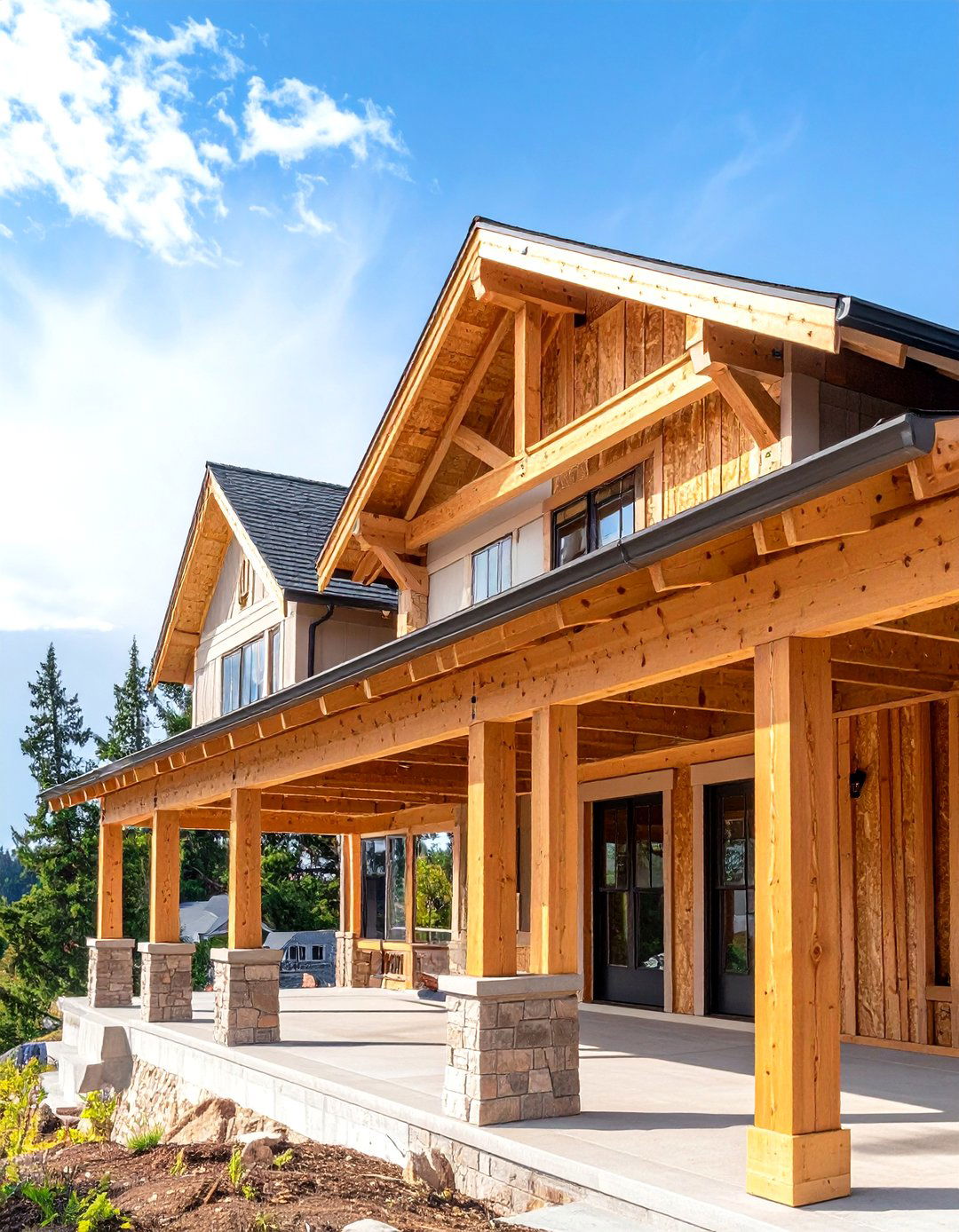
Exposed rafter tails peeking beneath the eaves lend rustic character and cast dramatic shadows that shift throughout the day. Use 4×6 or 4×8 Douglas fir beams chamfered at the ends; the extra depth visually grounds the otherwise low-slung roof. Apply a dark walnut or ebony stain so wood contrasts crisply against white stucco and echoes the front door tone. Where budget allows, add carved corbel blocks between tails to introduce subtle Mission flourishes without overwhelming the modest bungalow scale. Finally, conceal LED strip lights along the ledger to wash the rafters at night, highlighting craftsmanship while providing gentle ambient porch illumination.
8. Spanish Bungalow Exterior Courtyard Fountain Focus
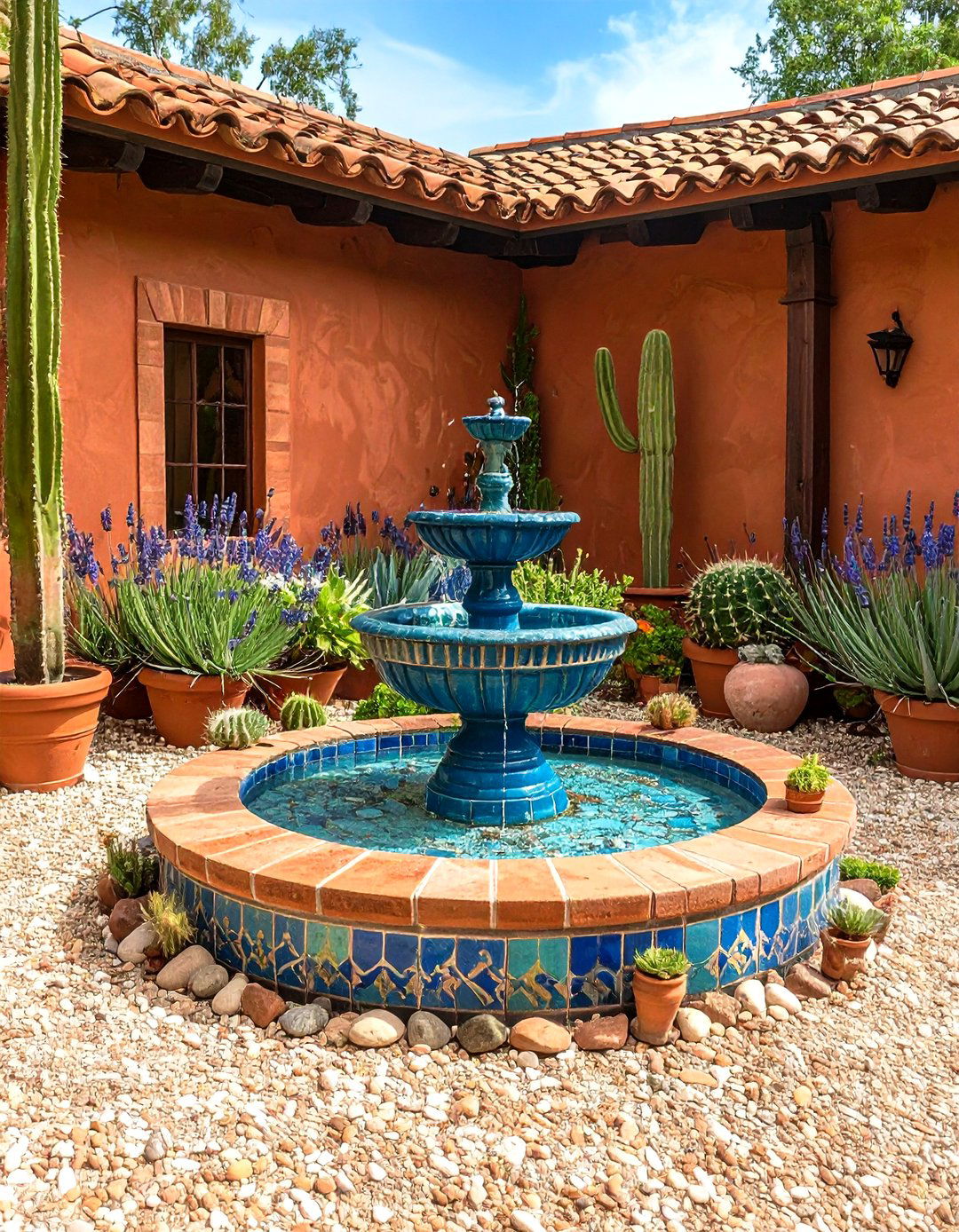
A petite, tile-clad tiered fountain centered in a gravel or terra-cotta courtyard brings soothing sound and a resort-style focal point to even the smallest bungalow lot. Position the basin so its sightline aligns with the front door; traditional Spanish planners called this the “vista de agua” that welcomes guests while masking street noise. Select a recirculating pump to conserve water, and surround the plinth with drought-tolerant lavender, rosemary, and agave for fragrance and wildlife appeal. Soft LED uplights tucked behind urns make ripples dance across adjacent stucco walls after sunset, extending enjoyment deep into warm evenings. If space is tight, swap the freestanding fountain for a wall-mounted lion-head spout feeding a half-moon basin—an authentic trick borrowed from Andalusian patio houses.
9. Spanish Bungalow Exterior Bougainvillea-Draped Pergola
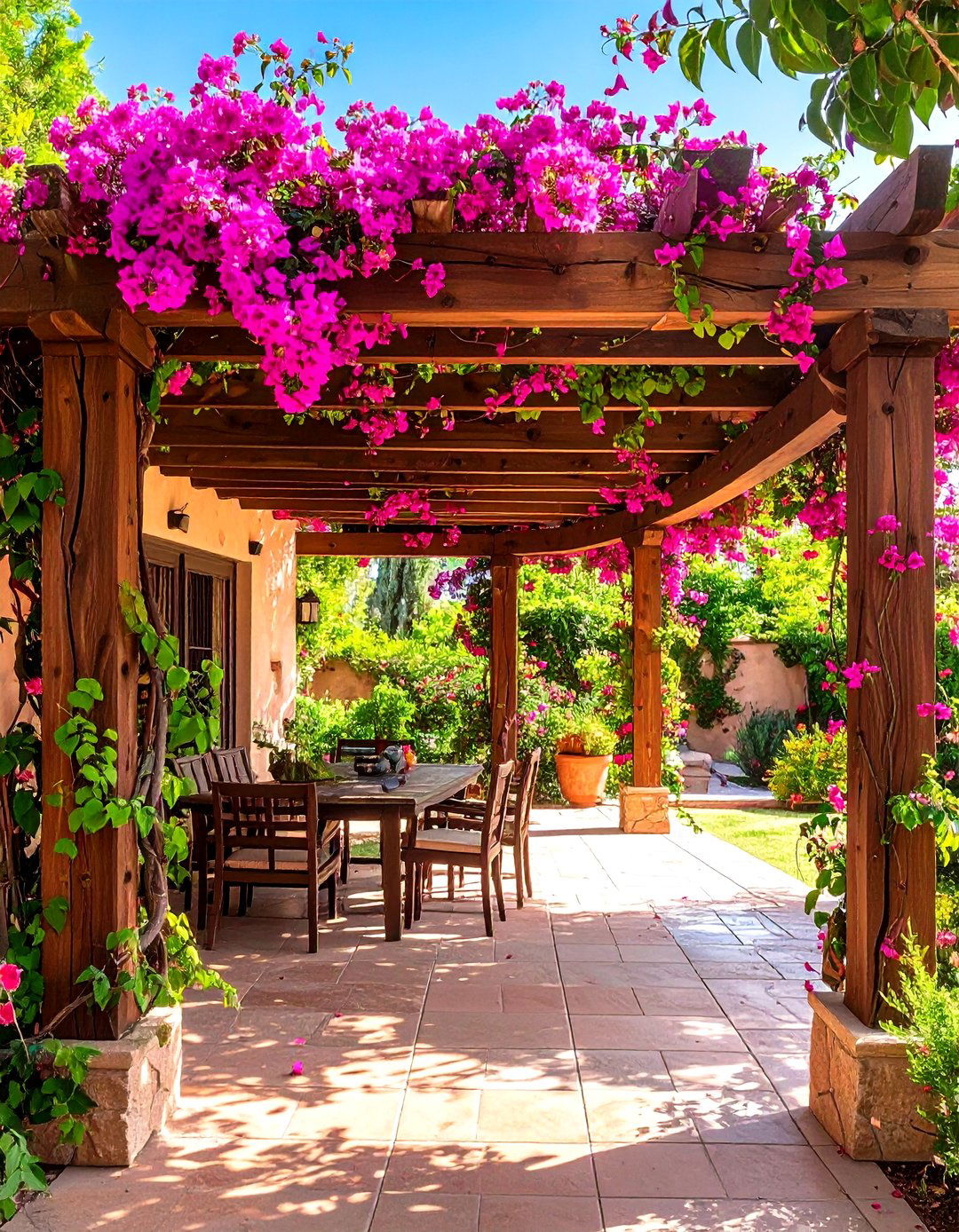
Climbing magenta bougainvillea scrambling over a cedar or steel pergola bathes stucco walls in flowering color and provides welcome filtered shade. Train two main canes up corner posts and pinch side shoots weekly; within one season the vine will veil the structure in petals without overwhelming the roof. Because bougainvillea thrives on neglect, keep irrigation minimal and fertilize only after heavy blooms to prevent excessive leaf growth. For year-round structure, intertwine the vine with evergreen star jasmine or install roller sun-shades beneath the rafters to extend usability during midday glare. Pair the living canopy with a rustic, hand-troweled stucco bench to create an outdoor sala that feels lifted straight from Santa Barbara’s historic courtyards.
10. Spanish Bungalow Exterior Terracotta Paver Walkway
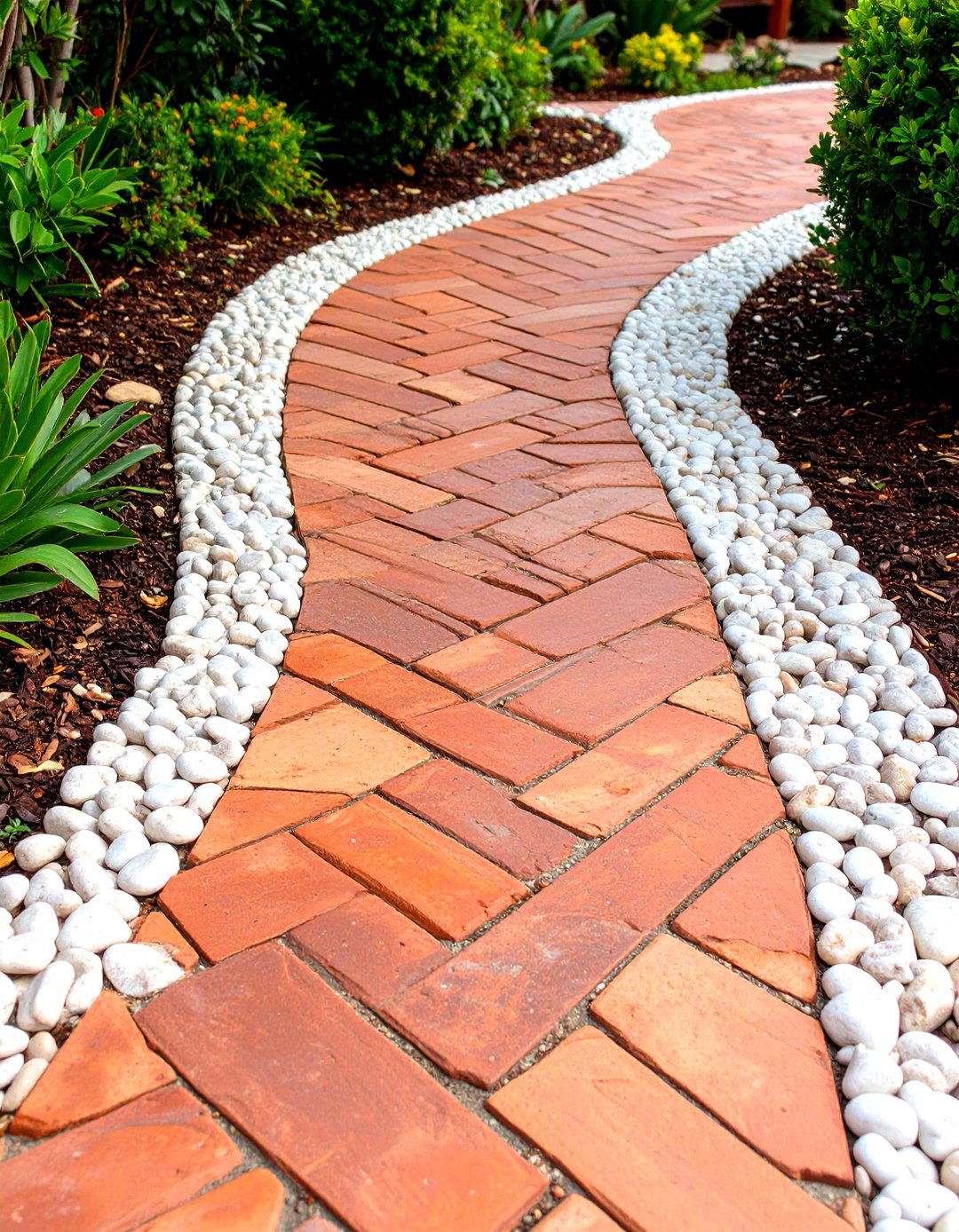
Hand-pressed terracotta pavers laid in a herringbone or basket-weave pattern guide visitors from sidewalk to porch while echoing the warm roof tones overhead. Set the bricks on compacted decomposed granite instead of concrete; the breathable base prevents cracking and allows rain to percolate into surrounding planting beds. Where winters freeze, substitute frost-resistant porcelain “cotto” tiles that mimic natural clay yet survive sub-zero nights. Border the path with low Mexican beach-pebble strip drains so water won’t pond against stucco foundations. Finish by sprinkling fine sand over joints and tamping lightly—the time-softened gaps encourage moss or thyme to creep in, yielding the relaxed, lived-in look prized around historic missions.
11. Spanish Bungalow Exterior Juliet Iron Balcony
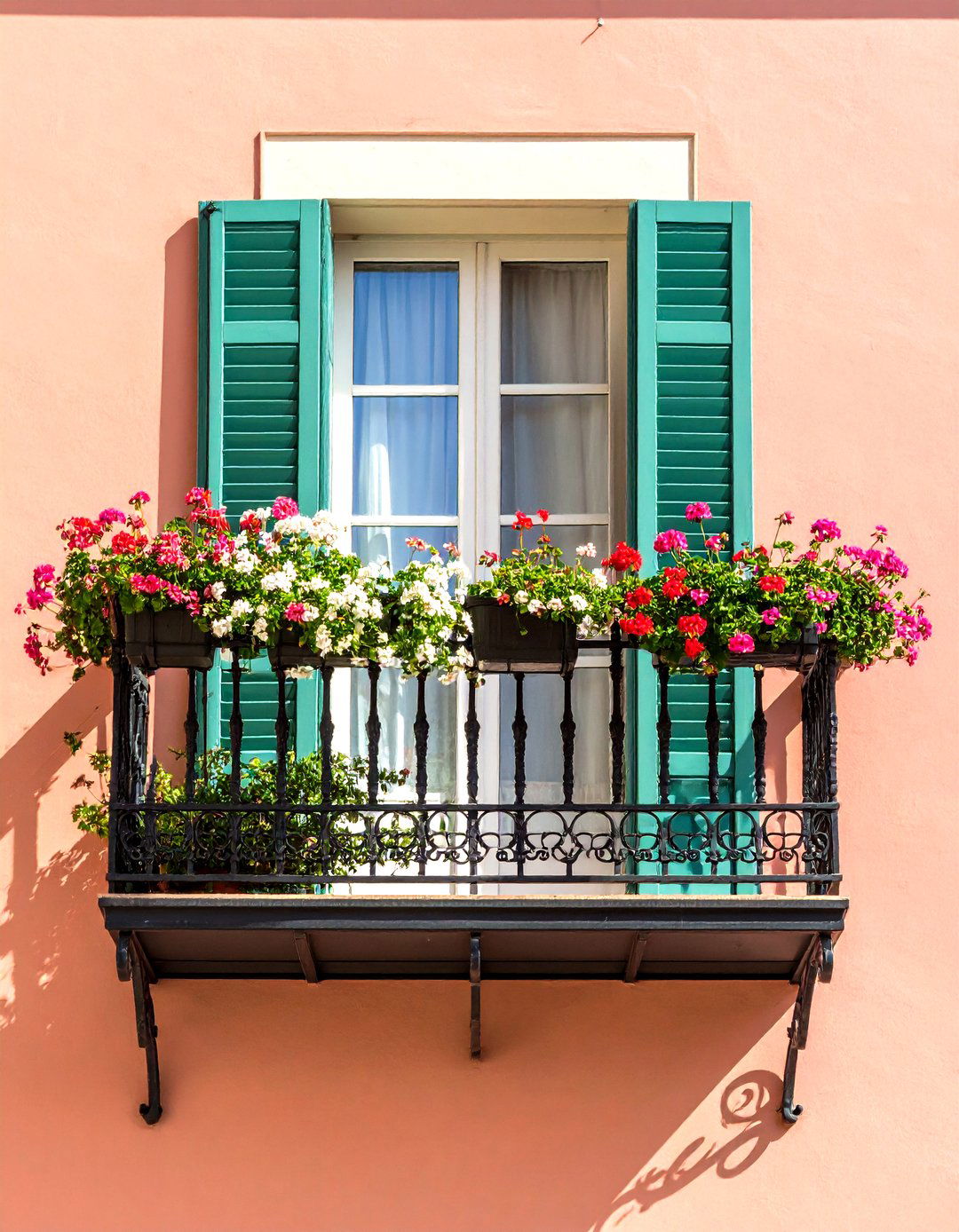
Even if your bungalow is strictly single-story, a shallow Juliet balcony over a pair of French casement windows adds romance without structural overkill. Fabricate the guard from ½-inch solid bar steel with repeating scrolls and finish it in matte black wax so it weathers gracefully. Planted window boxes overflowing with geraniums or trailing rosemary soften the metalwork and perfume the interior when the sashes are thrown open. Keep projections under twelve inches to meet most building codes while still allowing enough sill depth for planters. This small flourish draws the eye upward, balancing a wide façade dominated by garage doors or picture windows.
12. Spanish Bungalow Exterior Mission Parapet Bell Tower
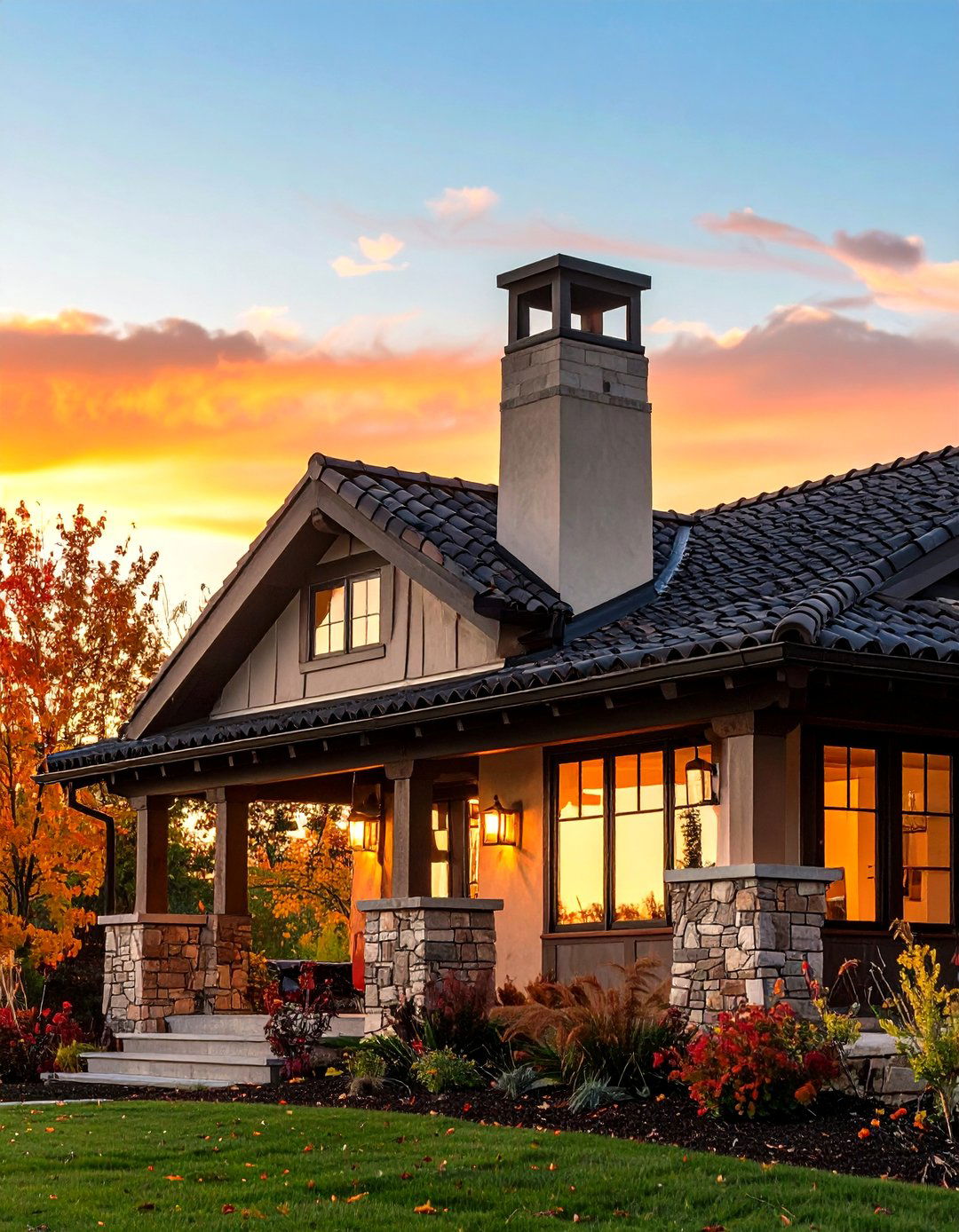
A modest scalloped parapet rising above the entry roofline instantly evokes the Mission Revival churches that inspired early twentieth-century California bungalows. Integrate a shallow niche or bell alcove within the stepped wall and hang a bronze campana to reinforce the ecclesiastical reference. Because the parapet masks the actual roof edge, waterproof the joint with membrane flashing and slope the roof back slightly for drainage. Finish the coping in smooth stucco or stone and accent the flute tops with thin terracotta caps that echo barrel tiles. Used sparingly, this sculptural silhouette provides an eye-catching focal point without increasing square footage or overpowering the bungalow’s single-story scale.
13. Spanish Bungalow Exterior Mosaic Address Numbers
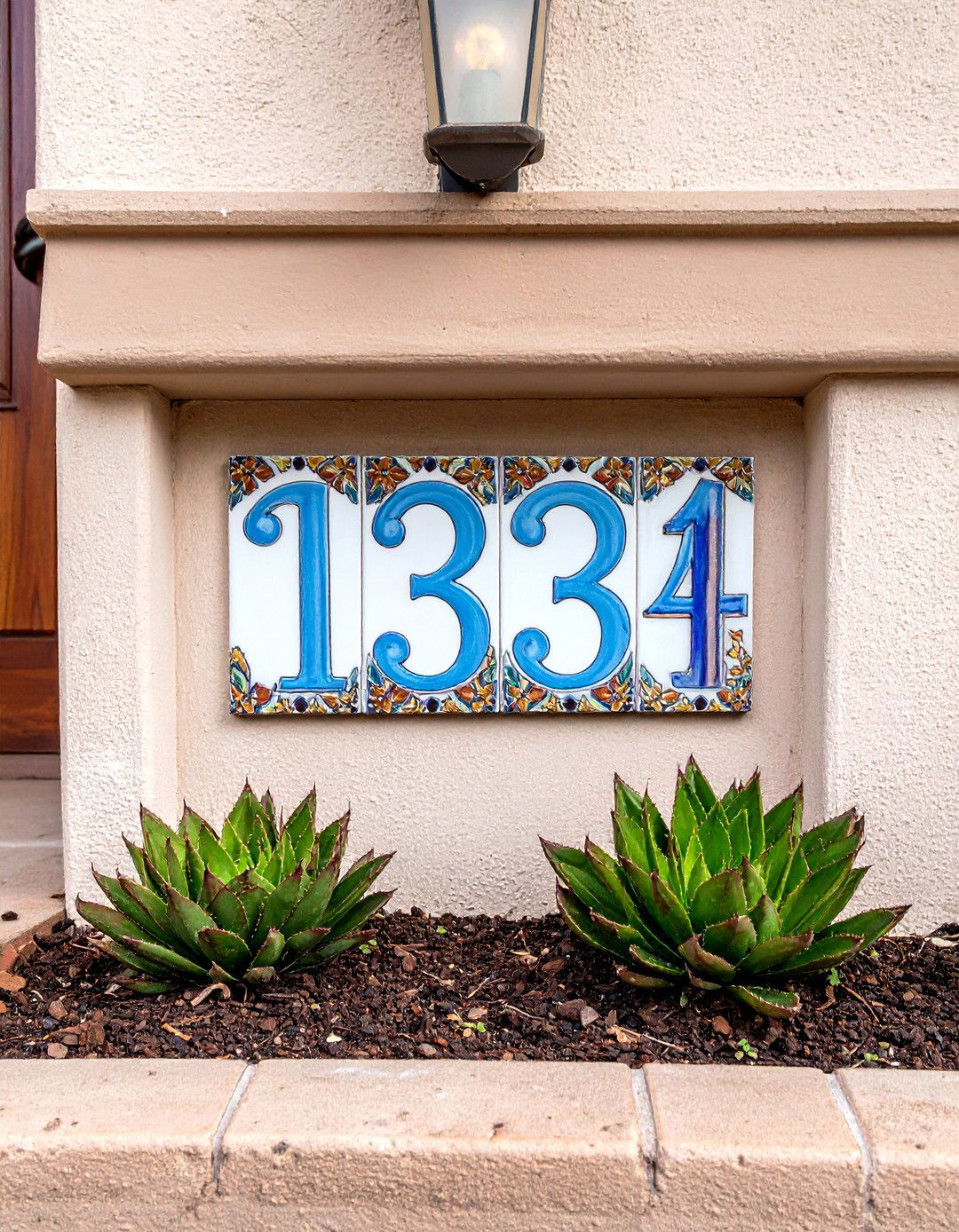
Swapping basic metal numerals for a mosaic tile address plaque instantly adds artisan flare at eye level with minimal expense. Use four-inch Talavera digits or commission a local ceramicist to craft custom colors that match porch risers. Mount the tiles on a backer board sealed with exterior grout, then inset the panel within a thin stucco recess to create a built-in look. For nighttime legibility, install a down-facing, low-glare brass picture light controlled by a photocell. This petite detail draws visitors’ eyes to the entry, subtly guiding them past garage doors and landscaping toward the front door. Patterned plaques are a staple of Spanish streetscapes from Seville to Santa Fe.
14. Spanish Bungalow Exterior Forged Lantern Lighting

Wall-mounted wrought-iron lanterns with seeded glass sides cast warm, dappled light that complements aged stucco and clay tile. Select fixtures wired for LED filament bulbs to mimic candle glow while slashing energy use. Install at 66 inches above grade on each side of the door and along long front façades at ten-foot intervals to create an inviting rhythm. Choose acid-washed copper back plates in coastal climates to resist corrosion, or coat iron bodies with matte poly enamel in harsher winters. For authentic finishing, add decorative shorts—perforated iron shades—over recessed can lights under eaves so uplighting highlights deep rafter shadows at night.
15. Spanish Bungalow Exterior Drought-Tolerant Mediterranean Garden
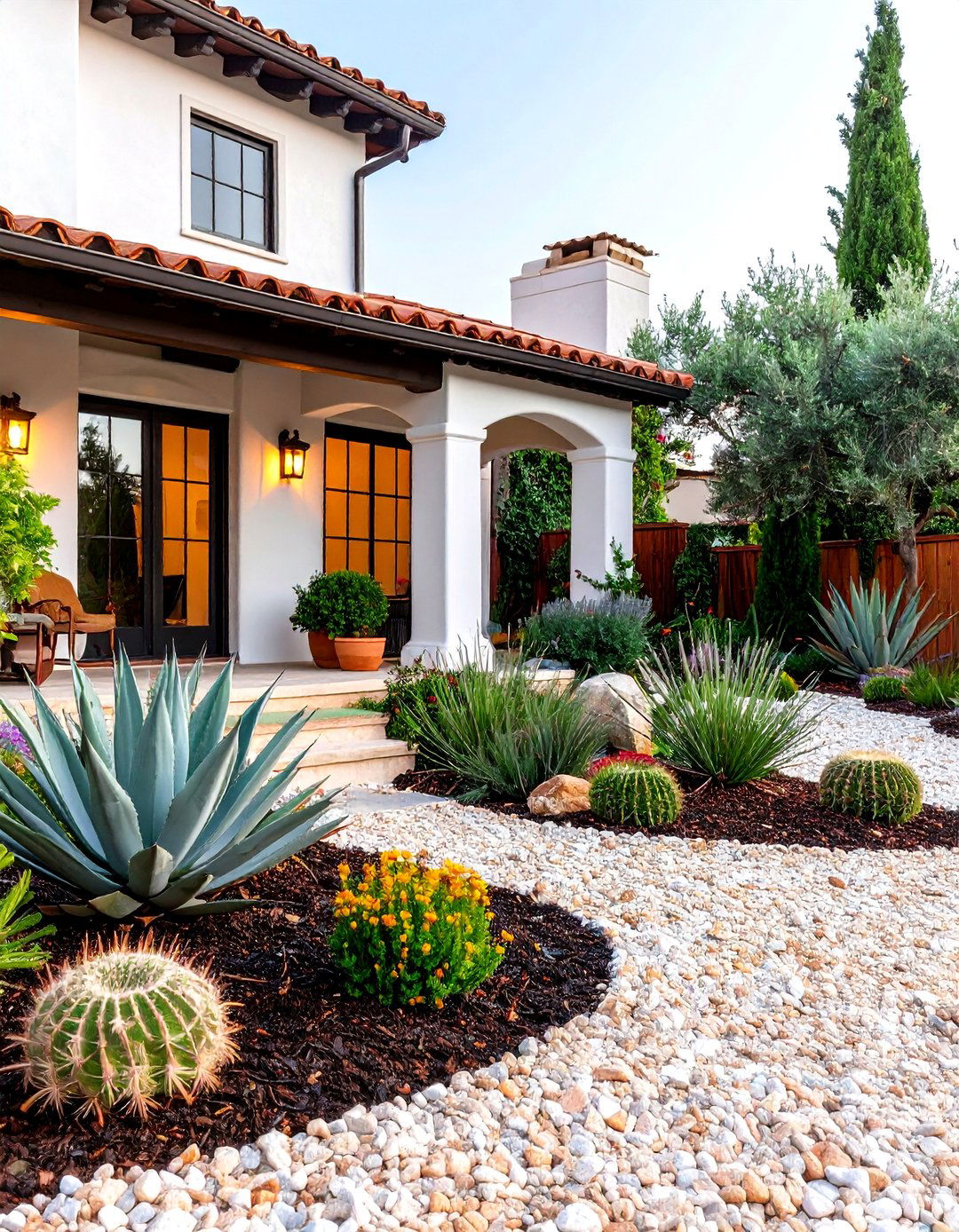
Low-water landscapes packed with silver-leaf olive, spiky agave, and fragrant rosemary echo the ecosystems of southern Spain and northern Africa while slashing irrigation bills. Layer heights—cluster knee-high lavender along paths, mid-story Mexican feather grass near stucco walls, and tall Italian cypress as punctuation behind the roofline. Mulch beds with decomposed granite or crushed terracotta roof tile to suppress weeds and pick up warm façade tones. Swap thirsty turf for creeping thyme or a permeable gravel courtyard; guests still find footing, but water use plummets. Finish with a simple drip system on a smart controller, then enjoy hummingbirds flocking to salvias all summer long.
16. Spanish Bungalow Exterior Barrel Tile Porch Awning

Extending a small shed awning clad in matching barrel tiles over the front stoop shields wood doors from sun and rain while tying new work to the main roof. Frame the overhang in stained Douglas fir and support it with decorative wrought-iron brackets to maintain light sightlines toward garden beds. Specify 4-in-12 pitch or lower so tiles nest securely without battens, simplifying installation. For a playful twist, edge the awning with half-round clay coping to create a tidy, finished fascia. Paint the exposed soffit sky blue—a historic gesture said to deter insects and brighten shaded entries. Use the same water-table flashing as the roof to ensure the junction remains watertight for decades.
17. Spanish Bungalow Exterior Reclaimed Brick Planter Walls
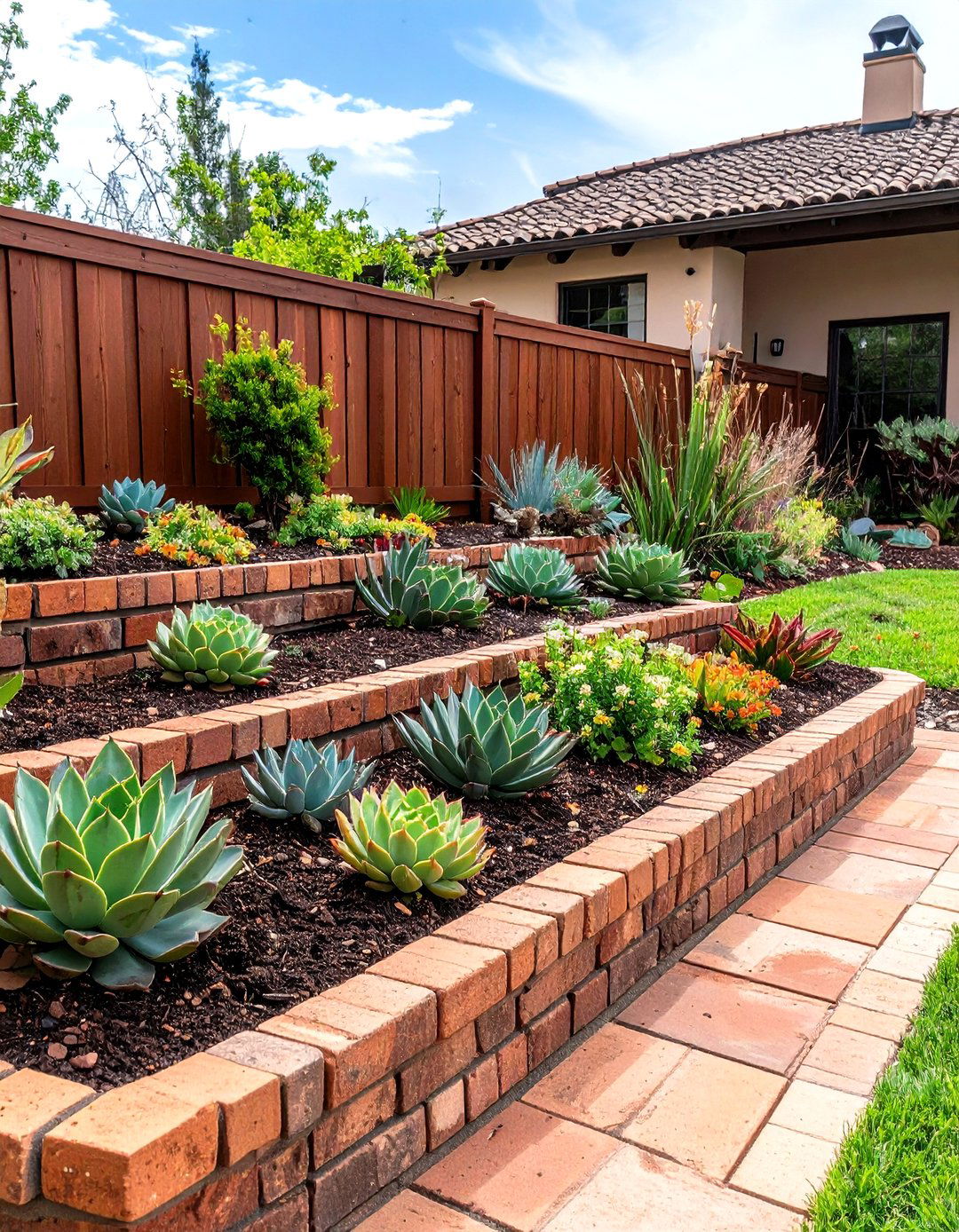
Low planter walls built from reclaimed clay brick or salvaged roof tile shards create texture and define outdoor rooms without the formality of concrete block. Lay bricks in a running bond one course below finished grade for stability, then top with a bullnose coping tile to echo stair risers. Fill with native succulents like echeveria and barrel cactus; the hardscape frames plants like artwork against stucco backdrops. In wetter climates, drill weep holes every two feet to prevent hydrostatic pressure and efflorescence staining. A serpentine layout softens straight walks, guiding guests as organically as a dry creek bed at night.
18. Spanish Bungalow Exterior Decorative Wooden Corbels
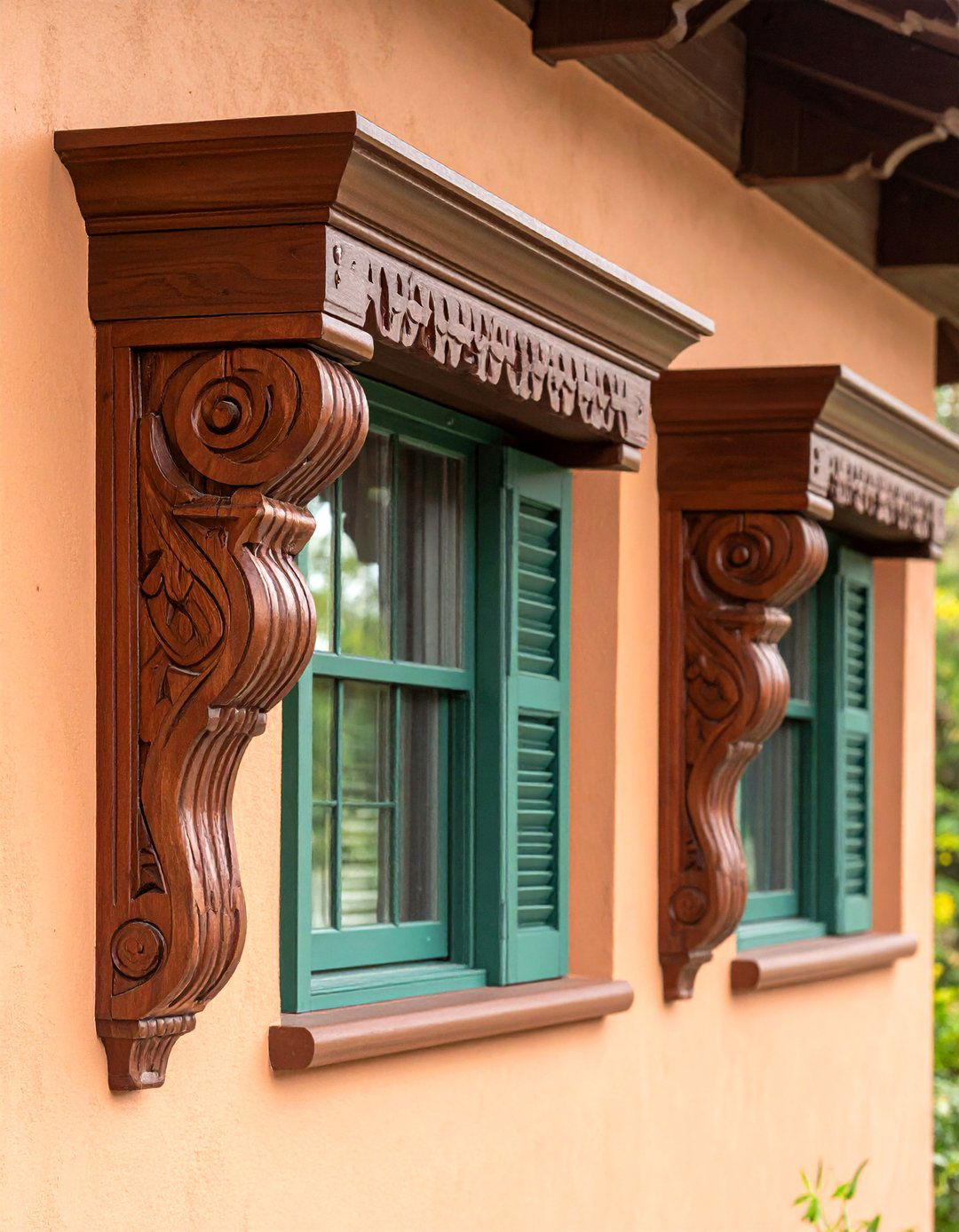
Chunky wooden corbels installed beneath window sills, porch beams, or roof rakes add tactile depth and shadow lines reminiscent of Old-World craftsmanship. Carve simple ogee or scroll profiles in cedar or redwood, then burnish with a torch and seal with tung oil for a lightly aged finish. When painted deep espresso, they echo iron hardware while staying budget-friendly. Spacing every four feet keeps loads balanced while visually framing fenestration. Use concealed lag screws set in epoxy so fasteners stay hidden and the sculptural forms read clean against white stucco. Corbels also provide discrete anchor points for seasonal wreaths or string lighting, proving decorative elements can earn their keep on busy porches.
19. Spanish Bungalow Exterior Saltillo-Edged Driveway
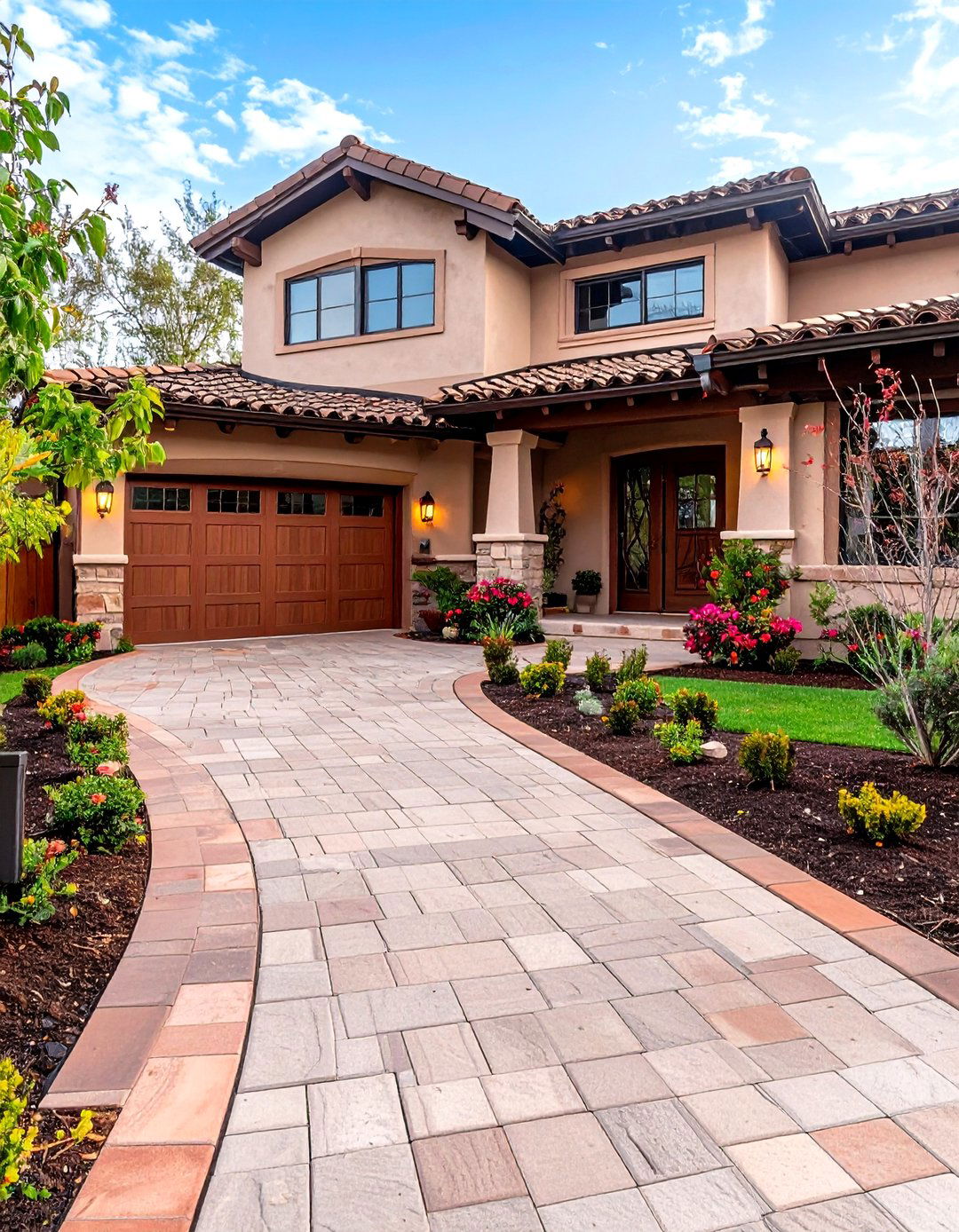
Replacing plain concrete borders with four-inch Saltillo tile bands turns a utilitarian driveway into a design statement that ties seamlessly to porch risers. Set tiles on a flexible thin-set rated for freeze-thaw cycles, then over-grout so joints sit slightly below the clay surface, aiding drainage. Seal twice yearly with breathable siloxane to prevent spalling from de-icing salts in cooler climates. Between banding strips, broom-finish concrete keeps traction high and blends with earthy tones as it weathers. Copper path lights on 12-inch stakes wash the tile with warm glow at night, highlighting the subtle color variation unique to hand-pressed pavers for added safety.
20. Spanish Bungalow Exterior Earth-Tone Stucco Palette

Updating faded white walls with a sun-washed palette of sand, oat, or pale peach modernizes curb appeal without abandoning Spanish DNA. These low-chroma hues still bounce light but feel softer against drought-tolerant gardens and dark bronze hardware. Ask your painter for mineral silicate paint; it bonds chemically to lime-based stucco, allowing vapor to escape and preventing peeling common with acrylics. Pair the body color with creamy trim and a slightly darker fascia so barrel tiles pop rather than blur into the sky. The result is a bungalow that feels freshly renovated yet timeless—ready to weather decades of sun and style shifts.
Conclusion:
All things considered, a Spanish bungalow exterior thrives on tactile materials, sculptural shadows, and curated color. By mixing timeless red clay tiles, white or earth-tone stucco, wrought-iron artistry, tile accents, and drought-smart landscaping, you can evoke Mediterranean romance while meeting modern performance needs. Whether you adopt one idea or weave several together, each detail adds warmth, authenticity, and long-term value—proving that small design moves can translate century-old charm into curb appeal that endures.


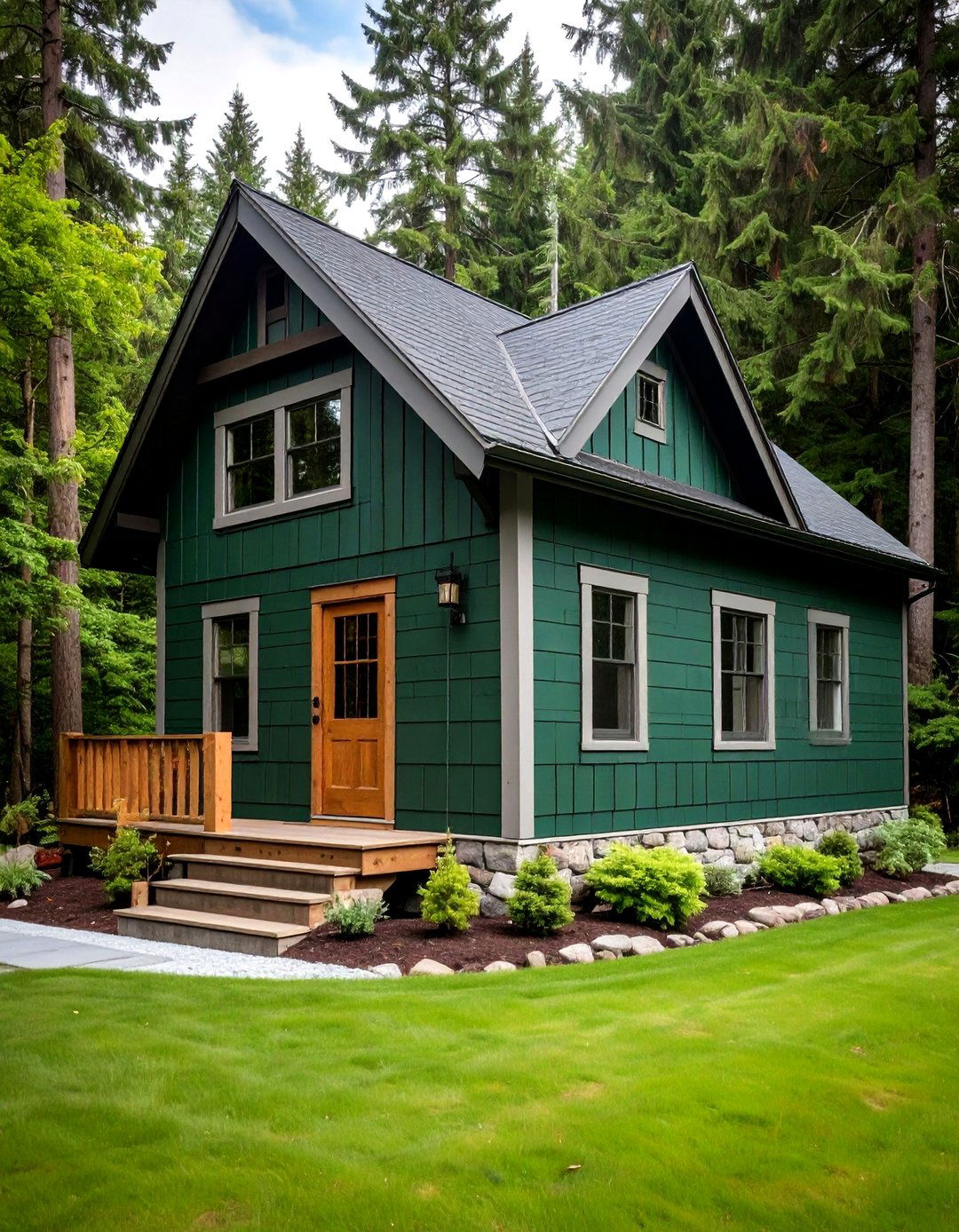
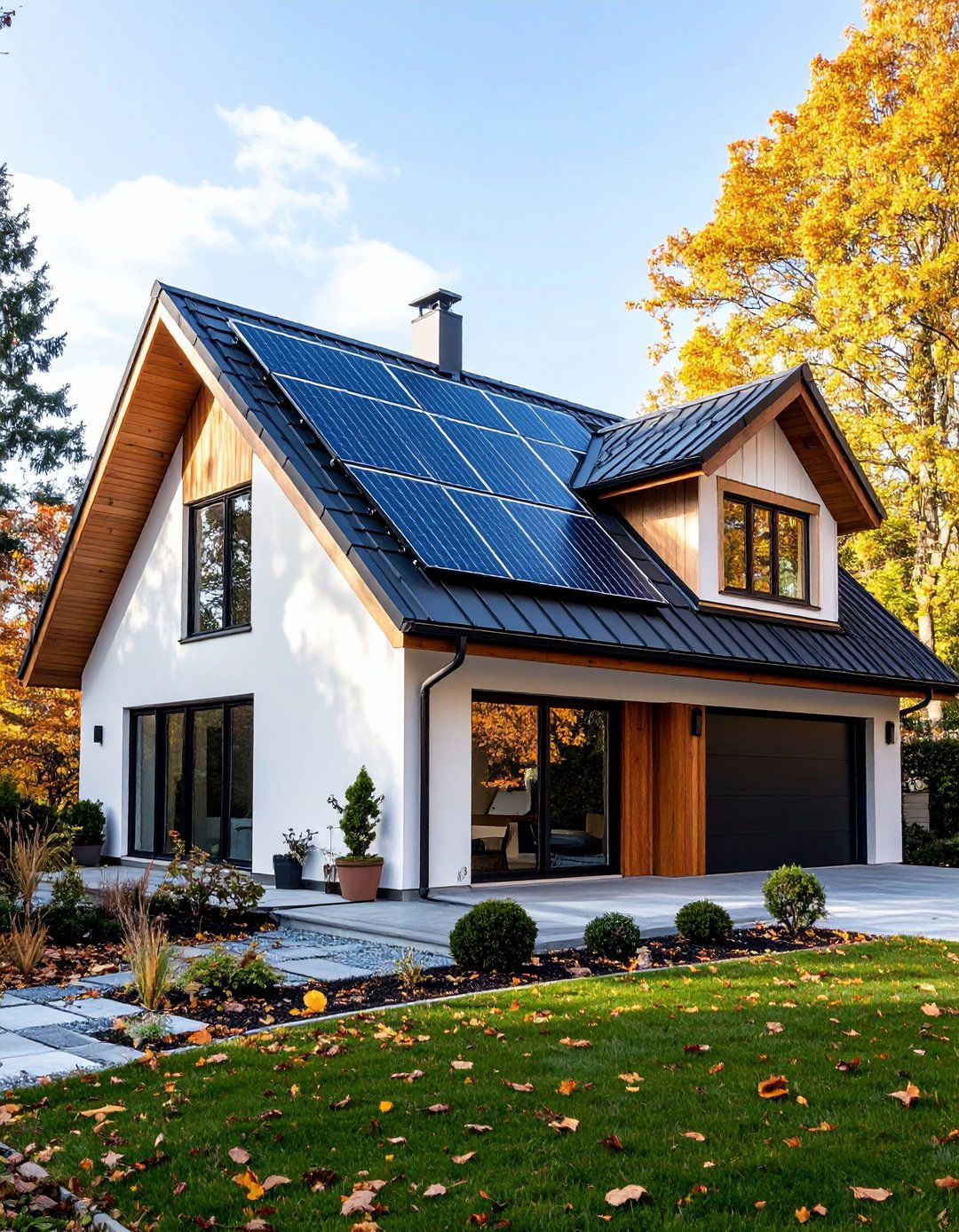
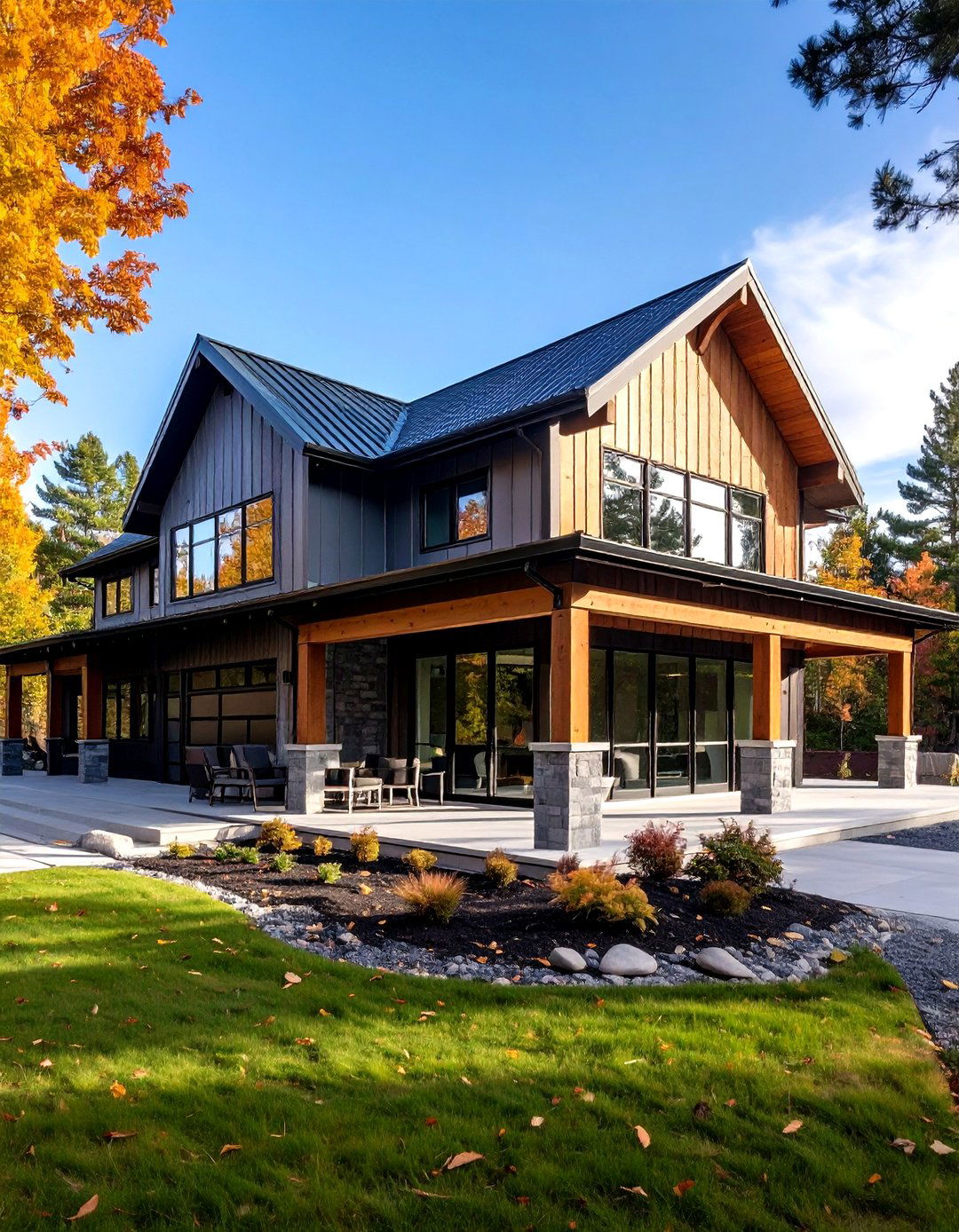
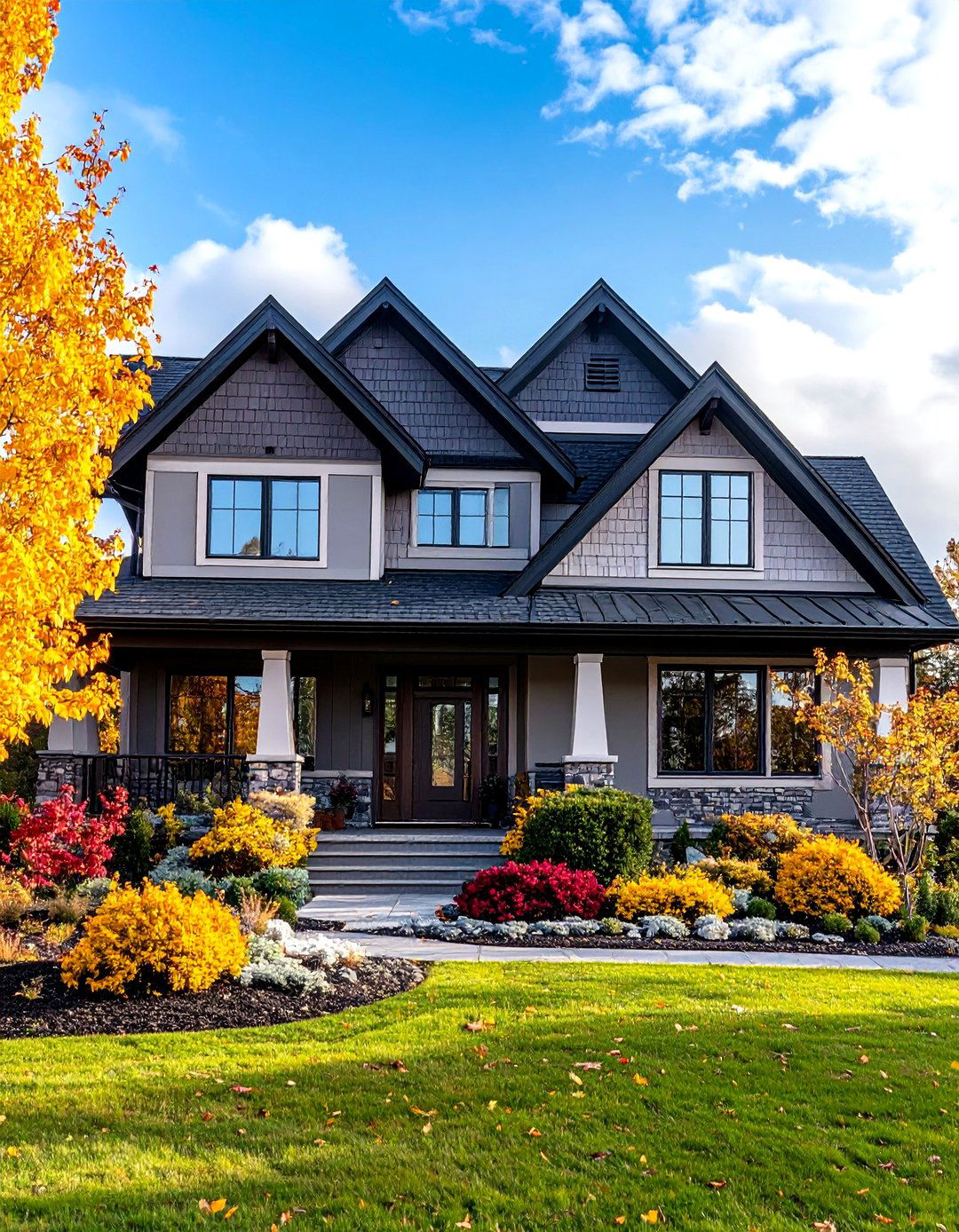
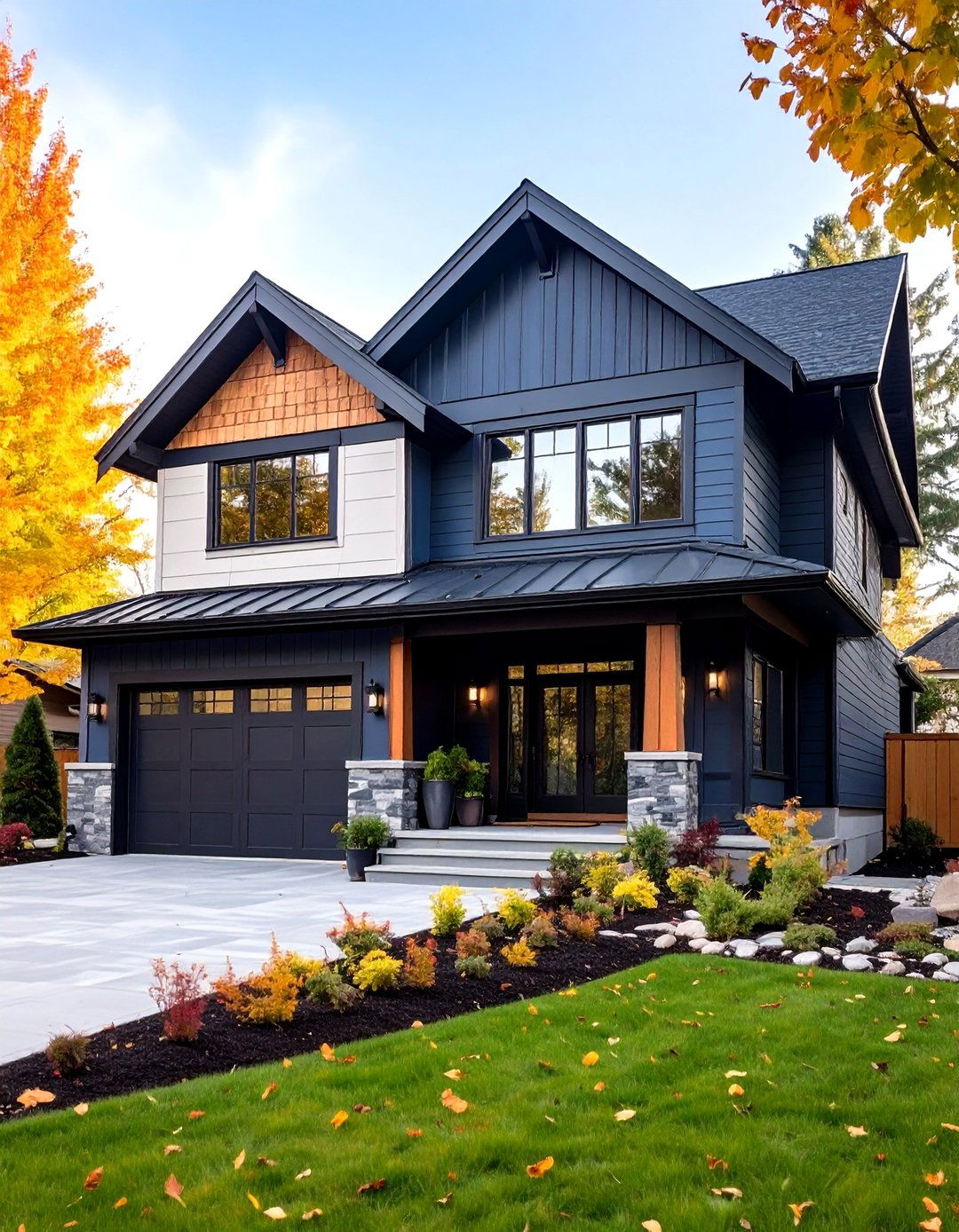
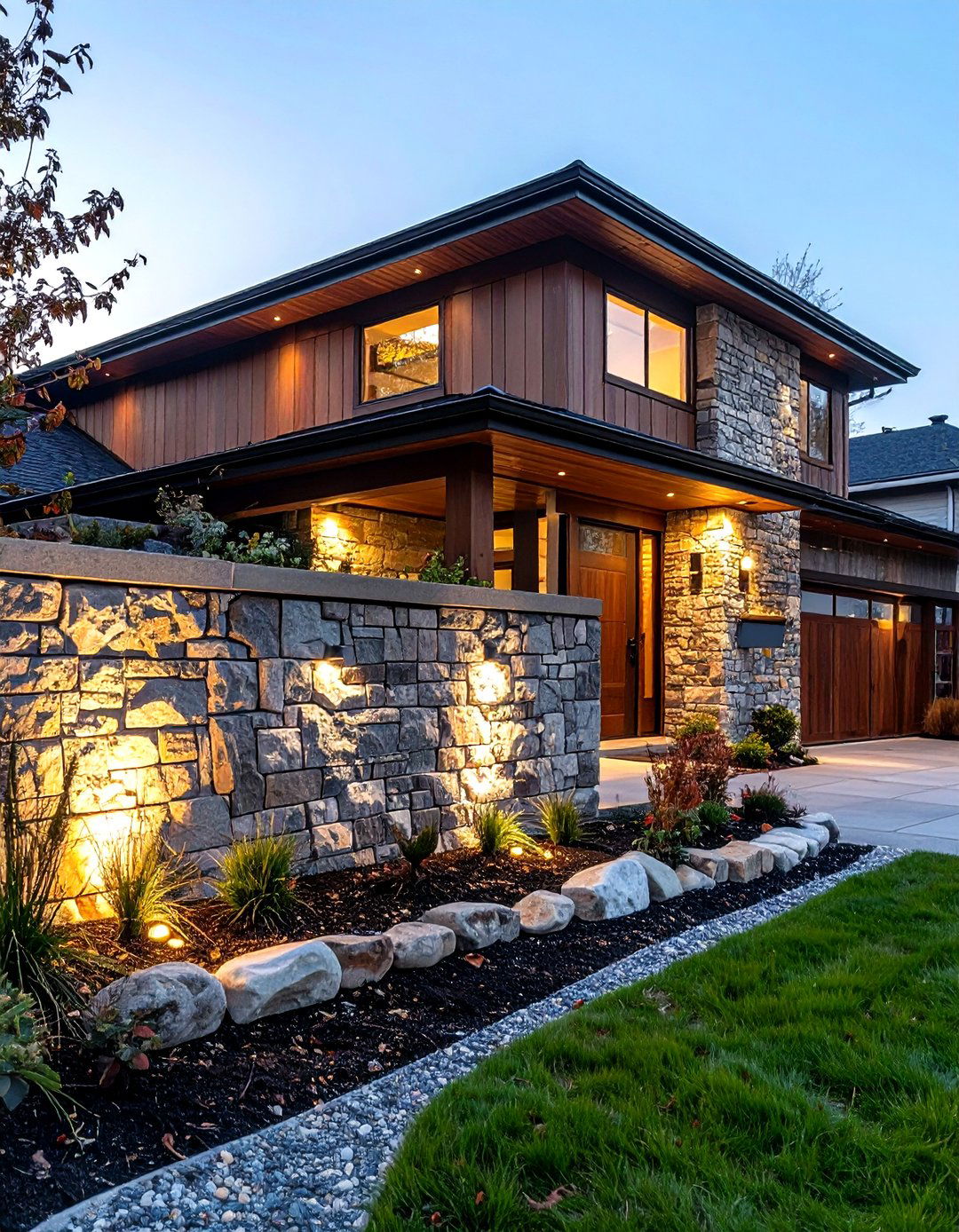
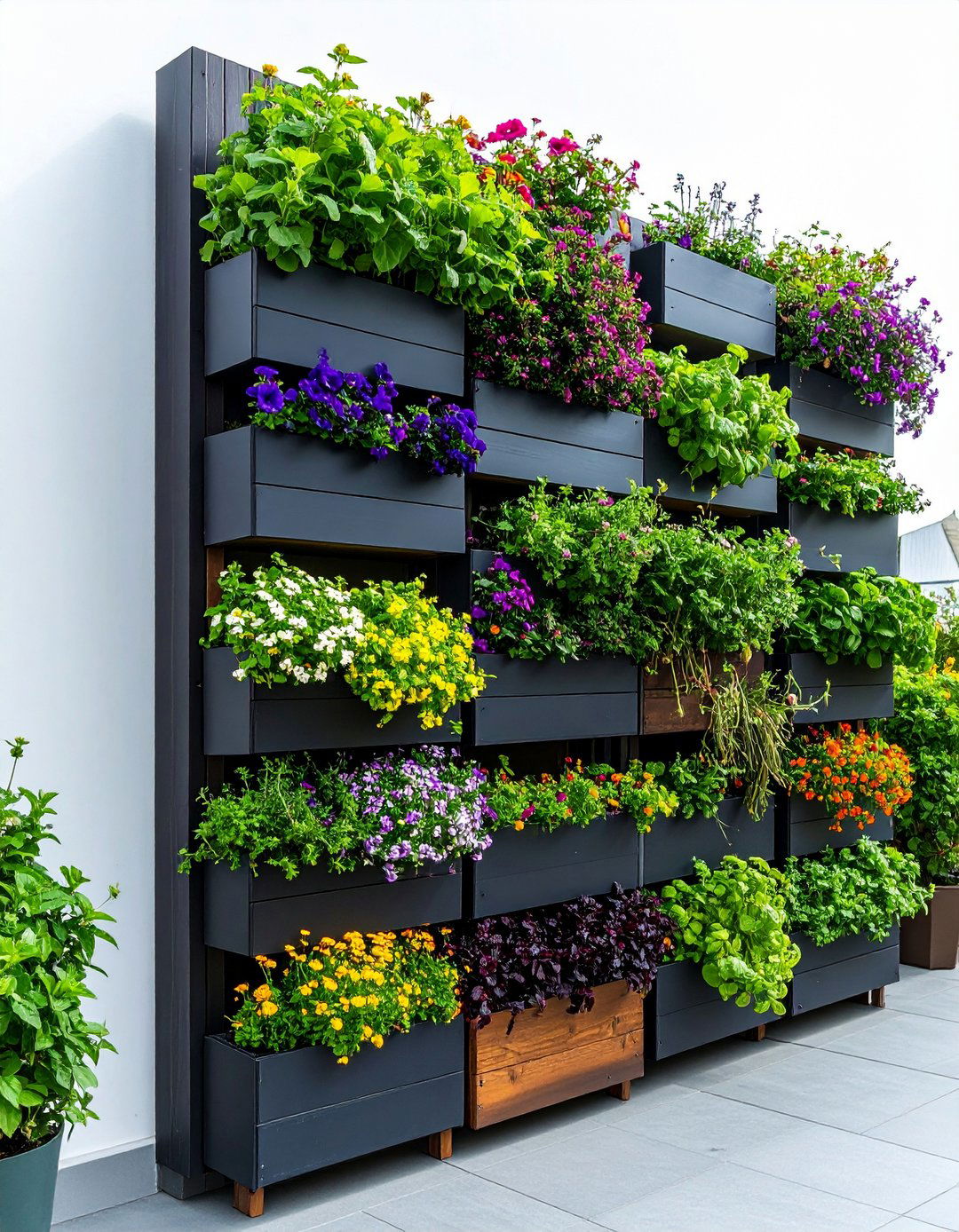
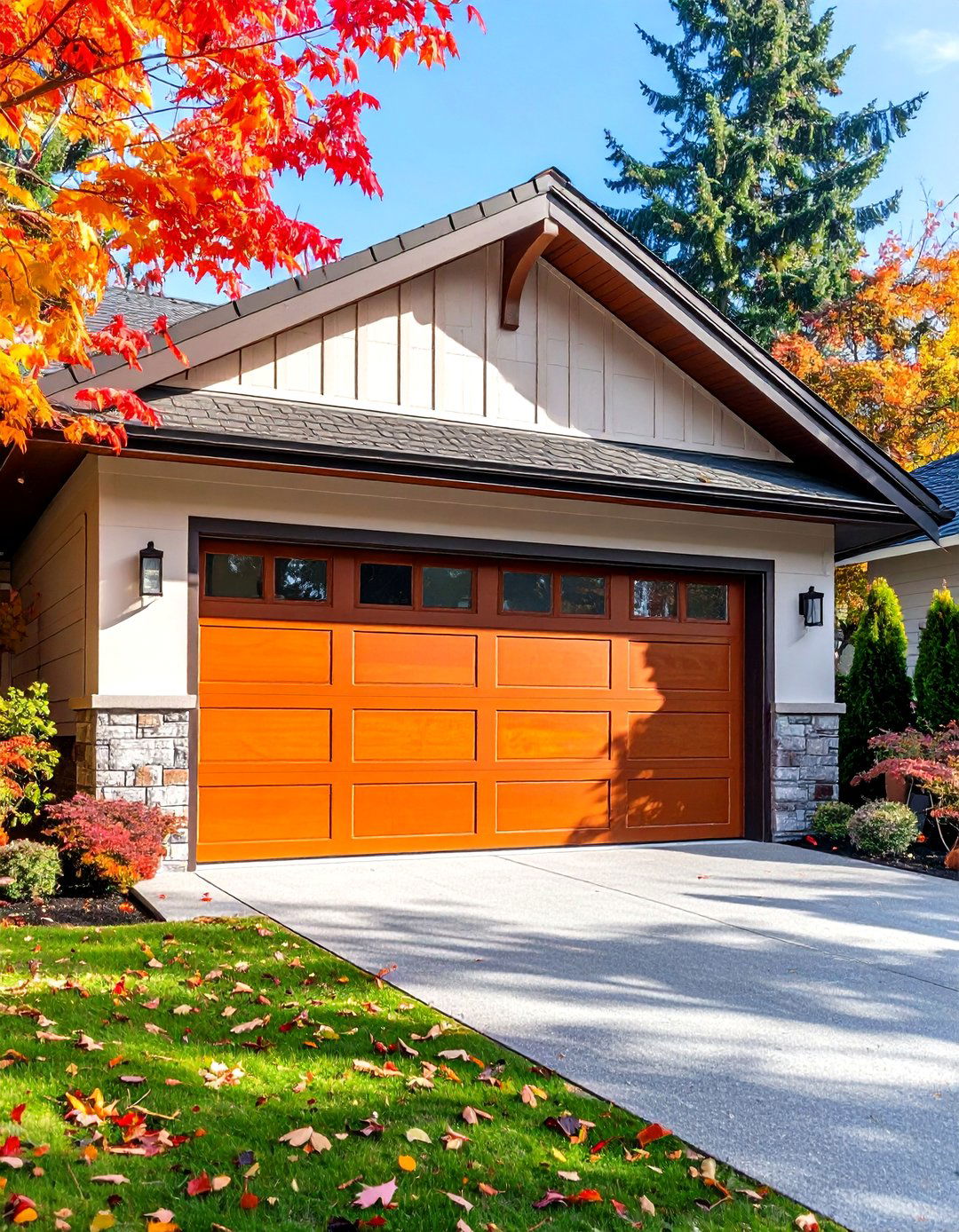
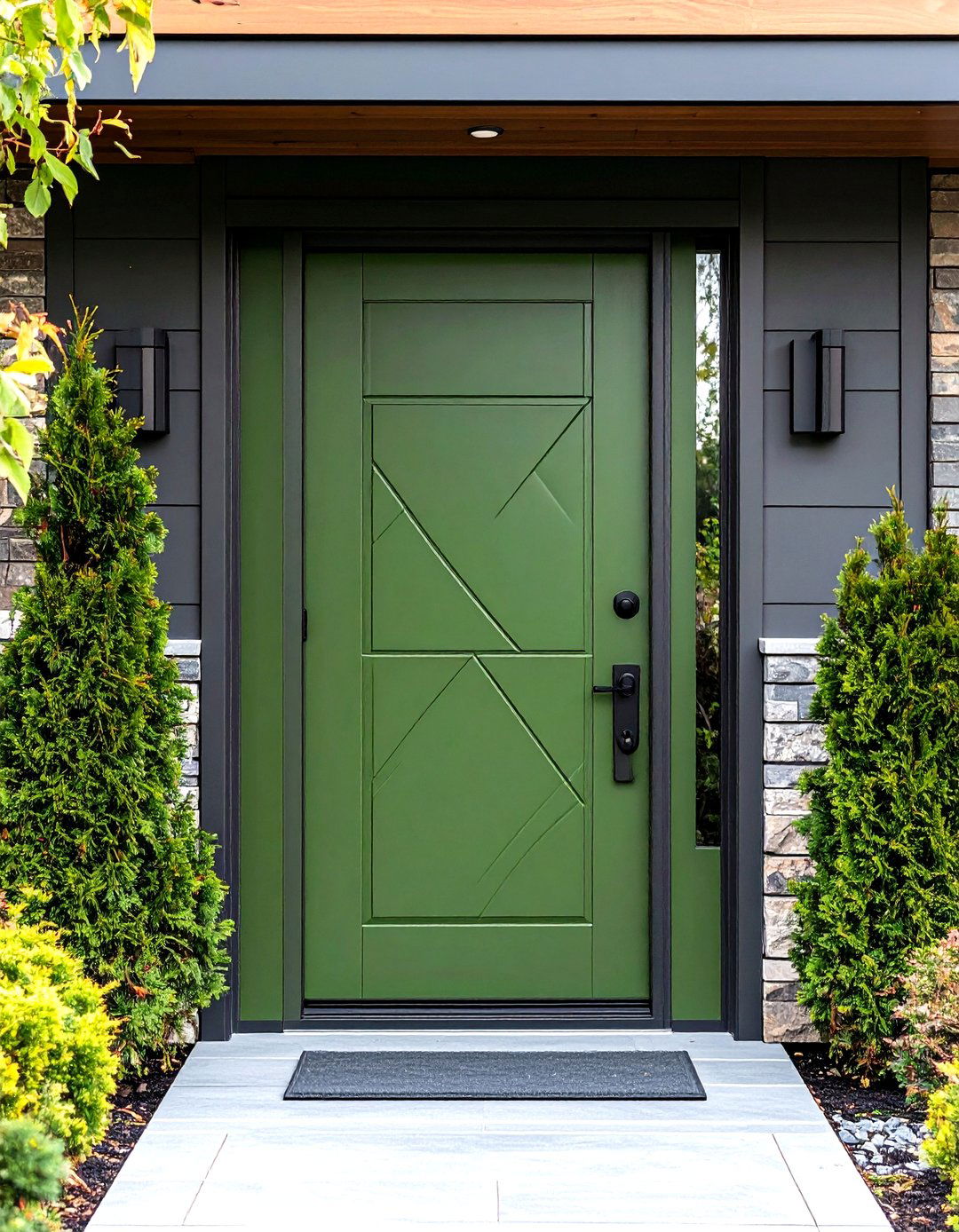
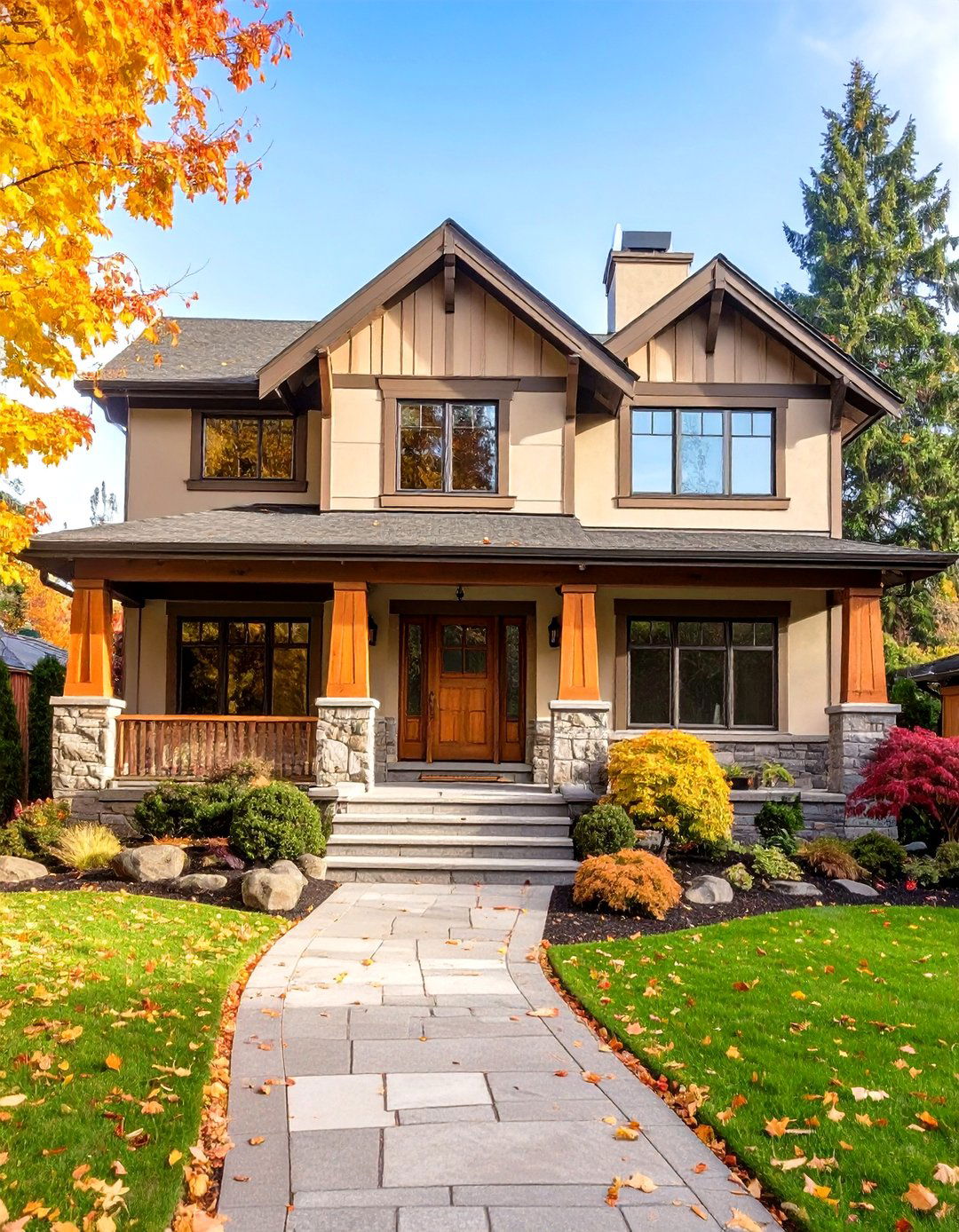
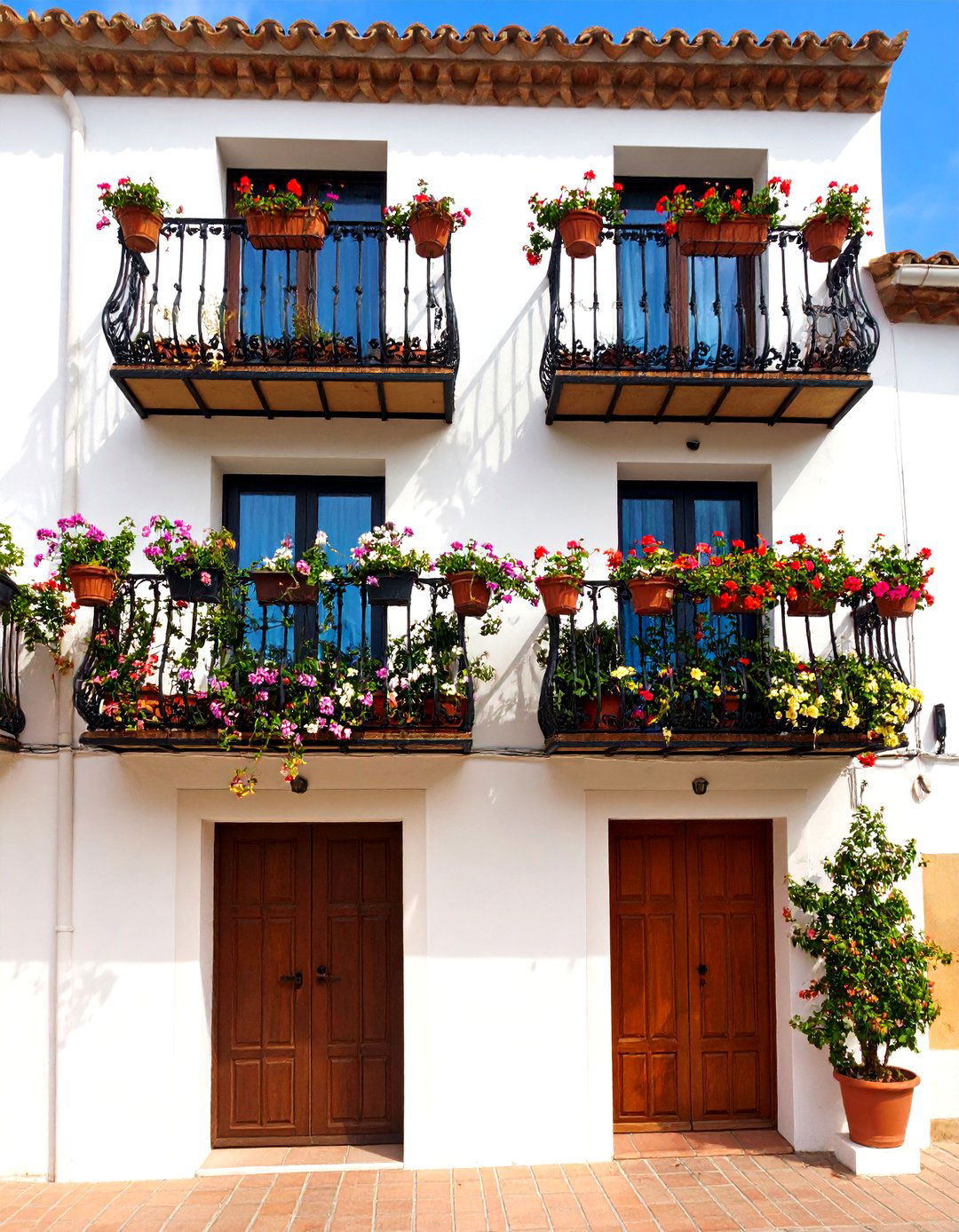
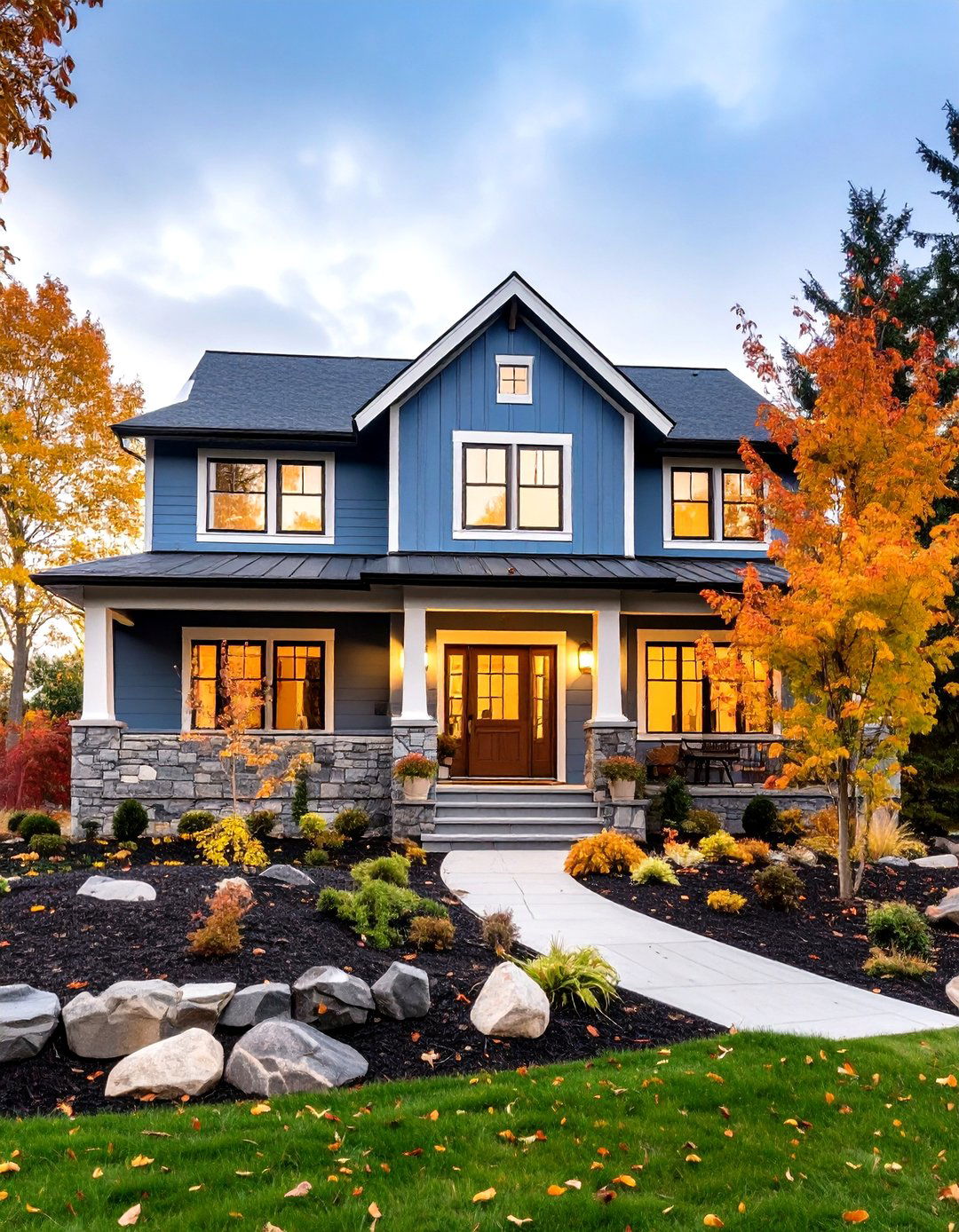
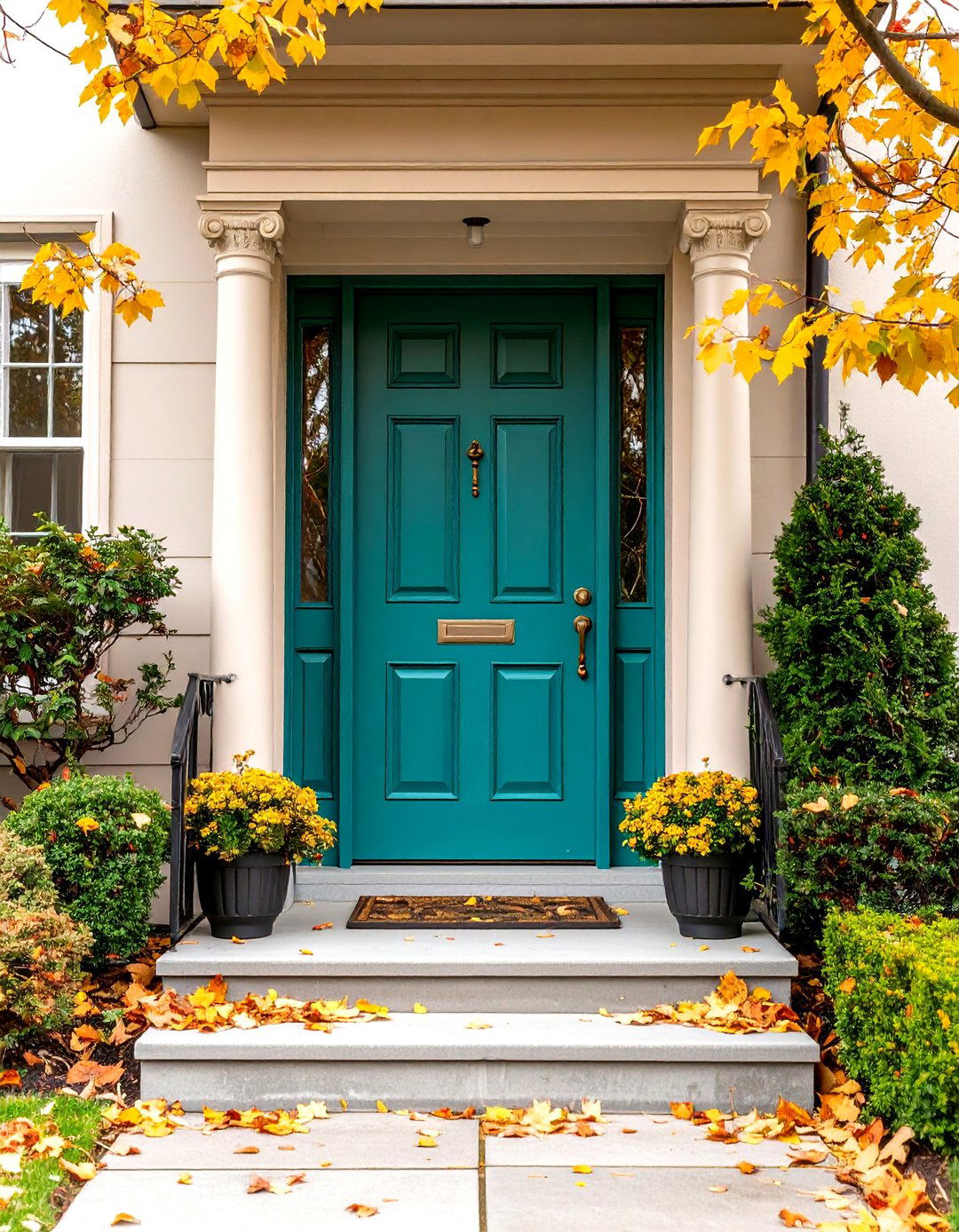

Leave a Reply